

Old Town Architecture
In less than two kilometers, you’ll uncover the many layers of this ancient town’s charm. Its streets follow a rare rectangular city plan, once encircled by moats and earthen walls. At its heart once stood a grand Khmer stone sanctuary, later crowned with a Lan Xang–style stupa when Khmer power waned. You’ll spot barays—ancient Khmer water reservoirs—quietly telling tales of past ingenuity, and wander past old wooden shophouses built by Chinese and Vietnamese immigrants generations ago. Some of these historic homes have now been reborn as cozy guesthouses and stylish cafés, welcoming travelers while preserving the town’s gentle, slow pace.



1
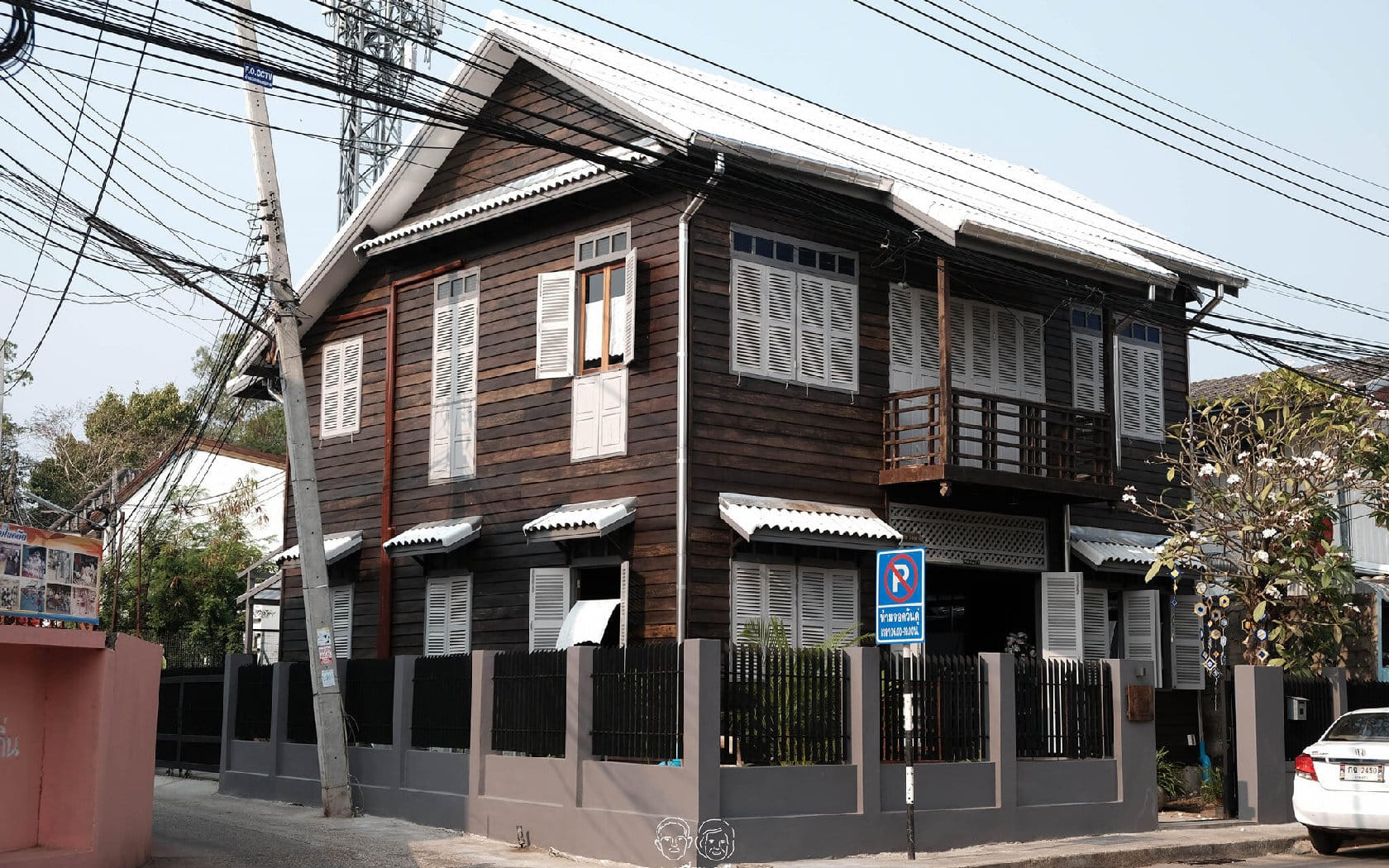
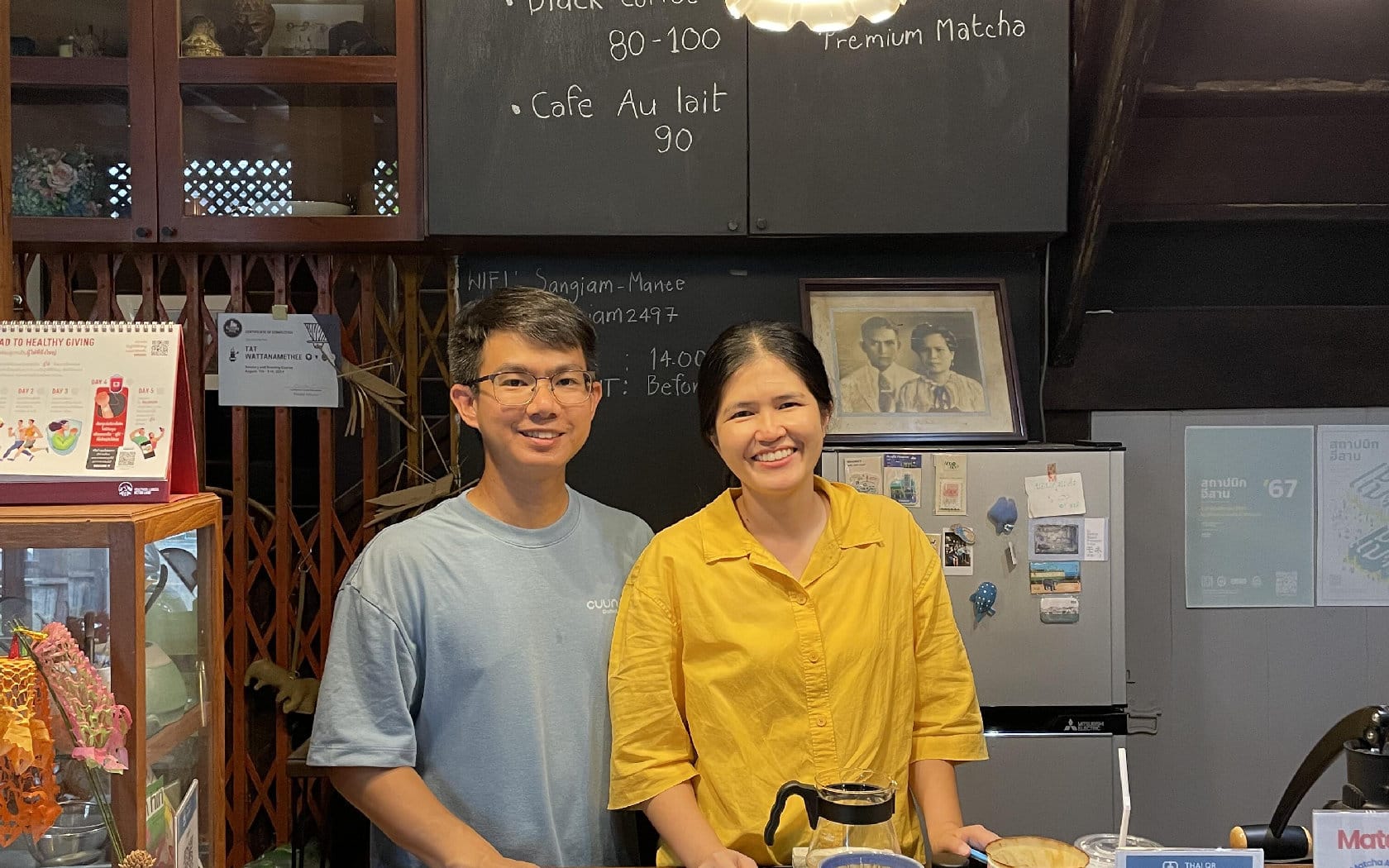
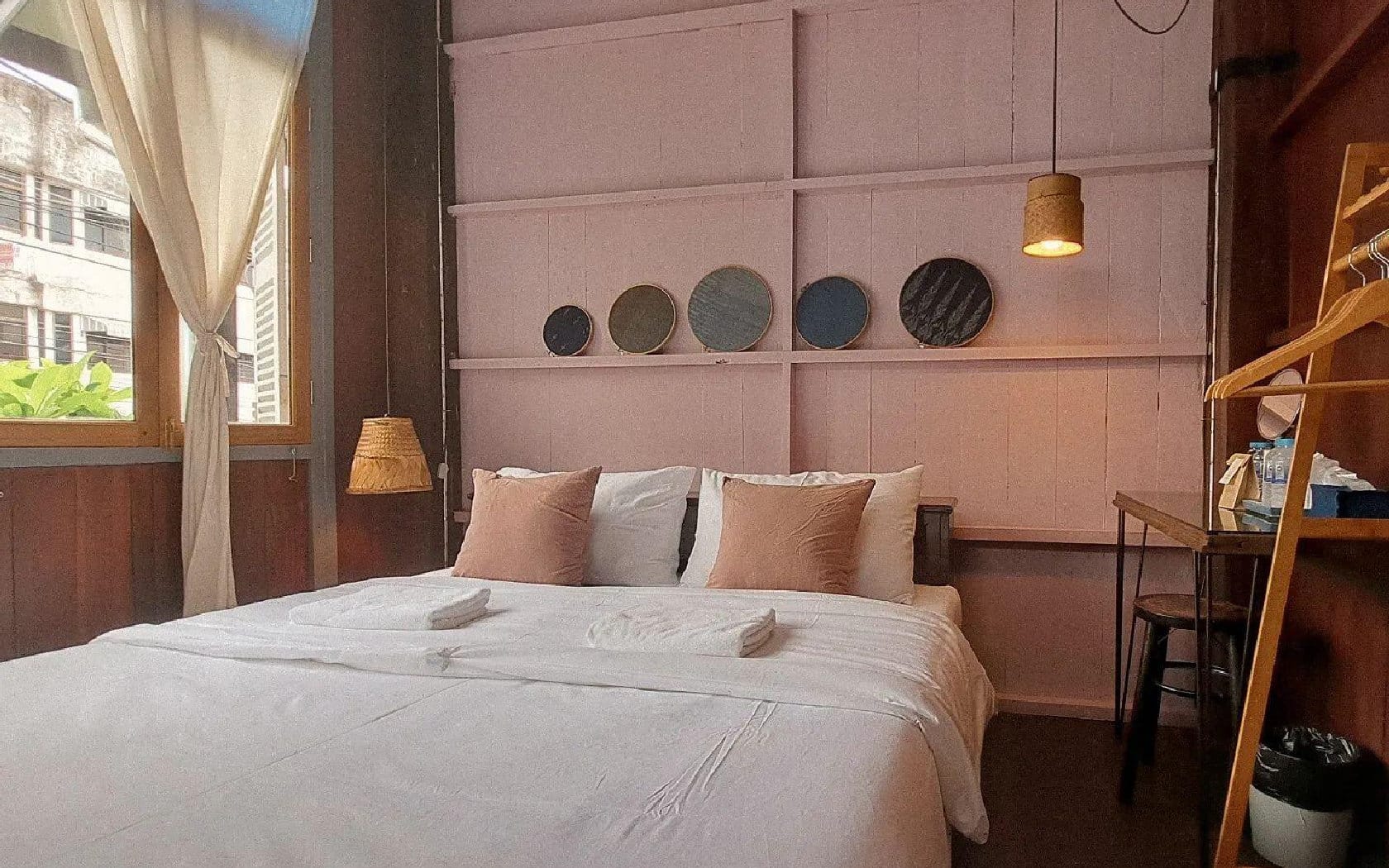
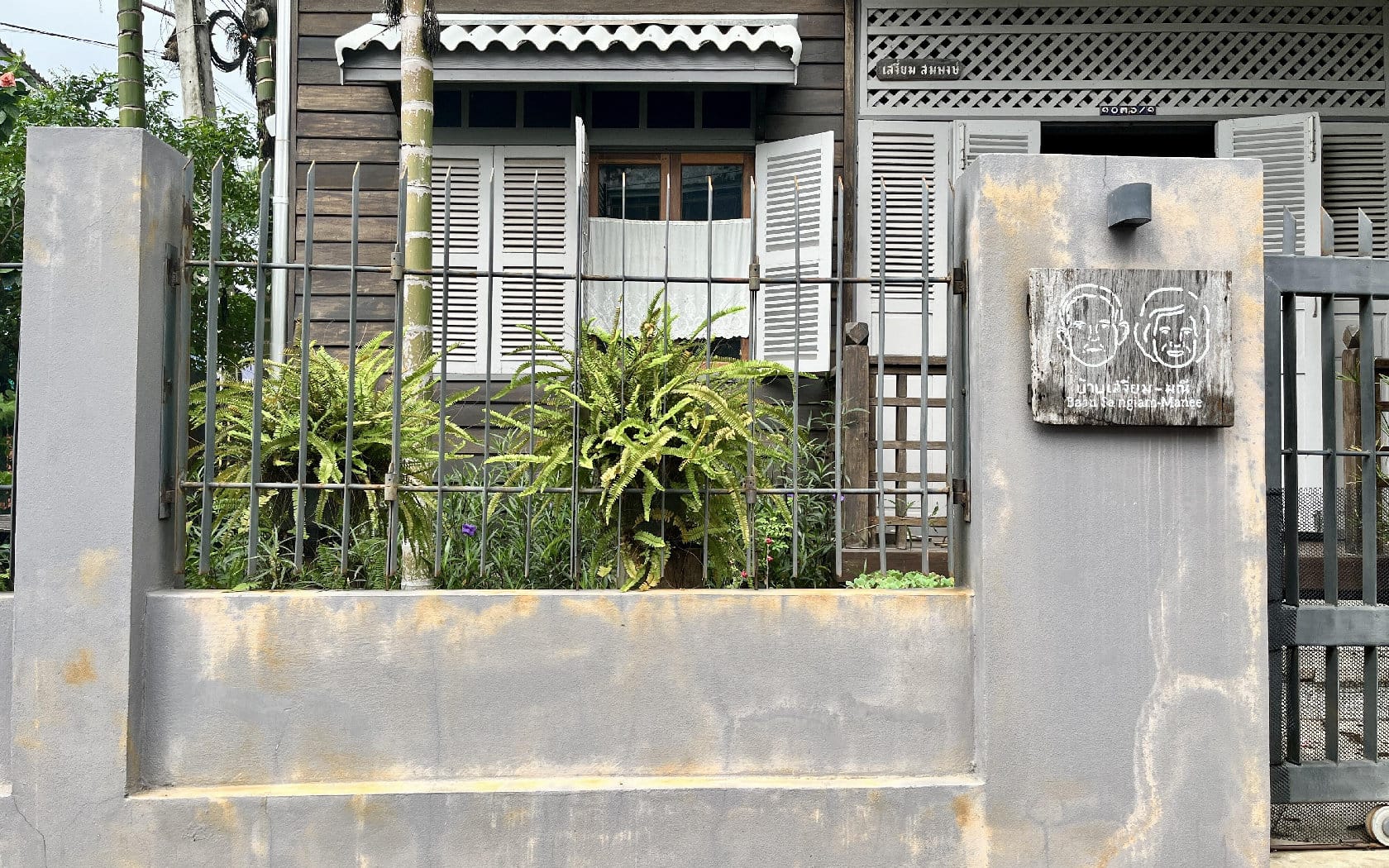
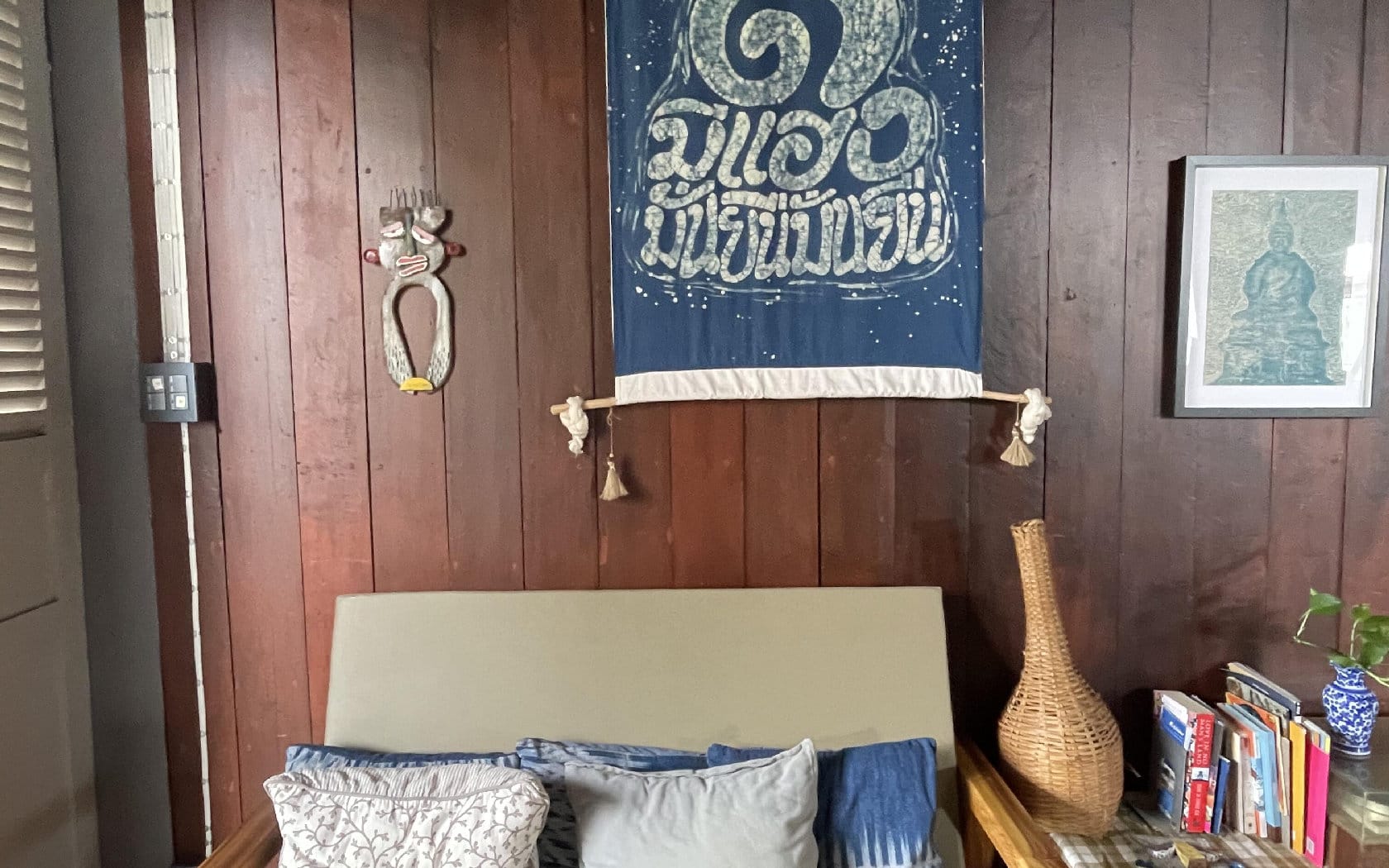
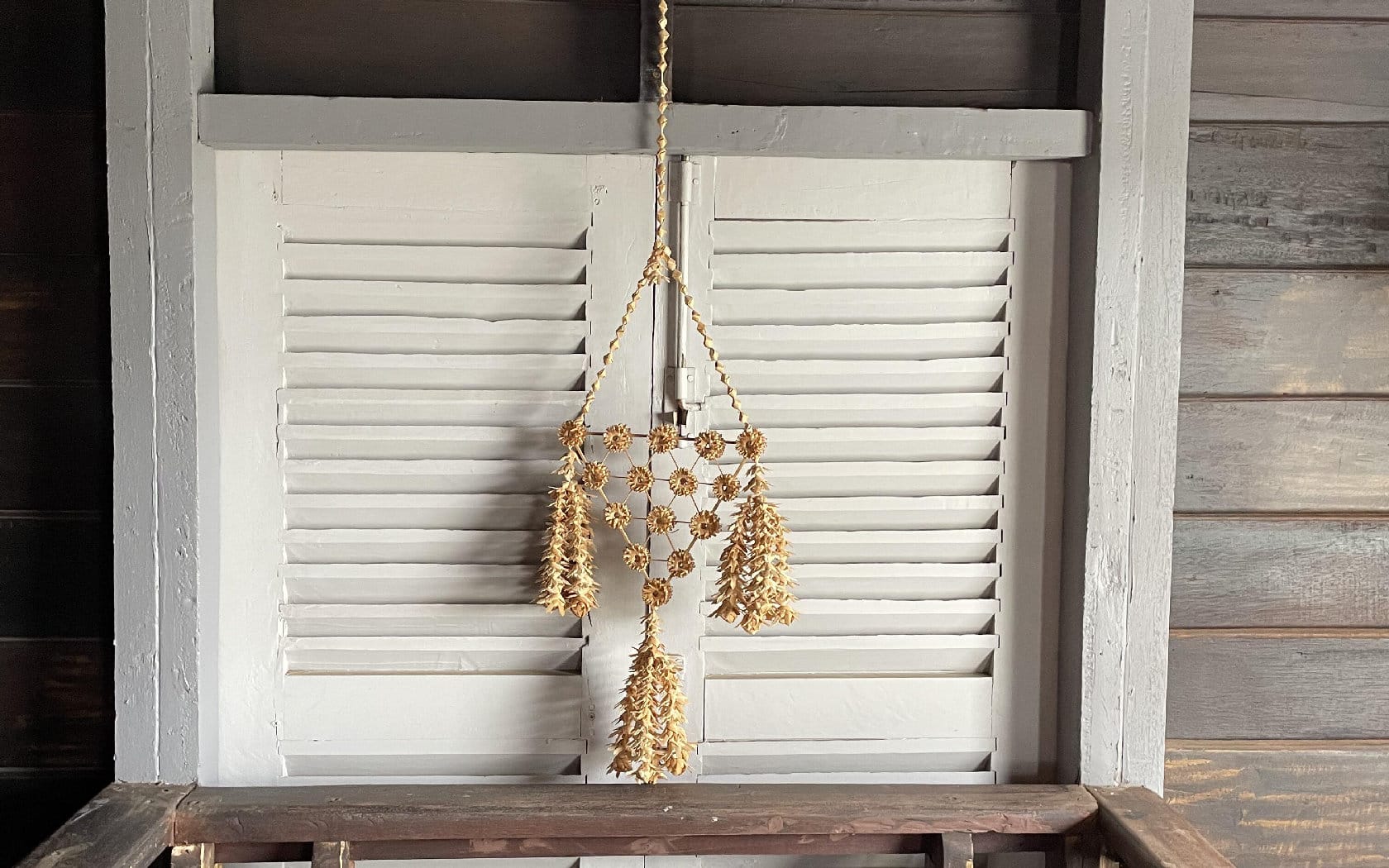
Baan Sa Ngiam-Manee
Step into a beautifully restored three-story wooden house, over 70 years old, now reborn as a charming boutique stay in the heart of Sakon Nakhon’s Old Town. Under the loving care of two architects—Fah and Tidtee, the third-generation heirs of the home—this 4-room retreat preserves its original soul while offering modern comforts. Each room—Yon Sakon, Mon Nong Han, Lalan Na, and Thueng Phu Phan—carries its own story, inviting guests to connect with the heritage of the city. Beyond just a stay, it’s a living tale of preservation, local pride, and warm hospitality. On the ground floor, the aroma of craft coffee, matcha, and homemade gelato from CUUN and Co. mingles with the hum of guest conversations, creating the perfect space to slow down and savor the moment.
Opening Hours: By appointment
Tel: 06 2727 7126
2
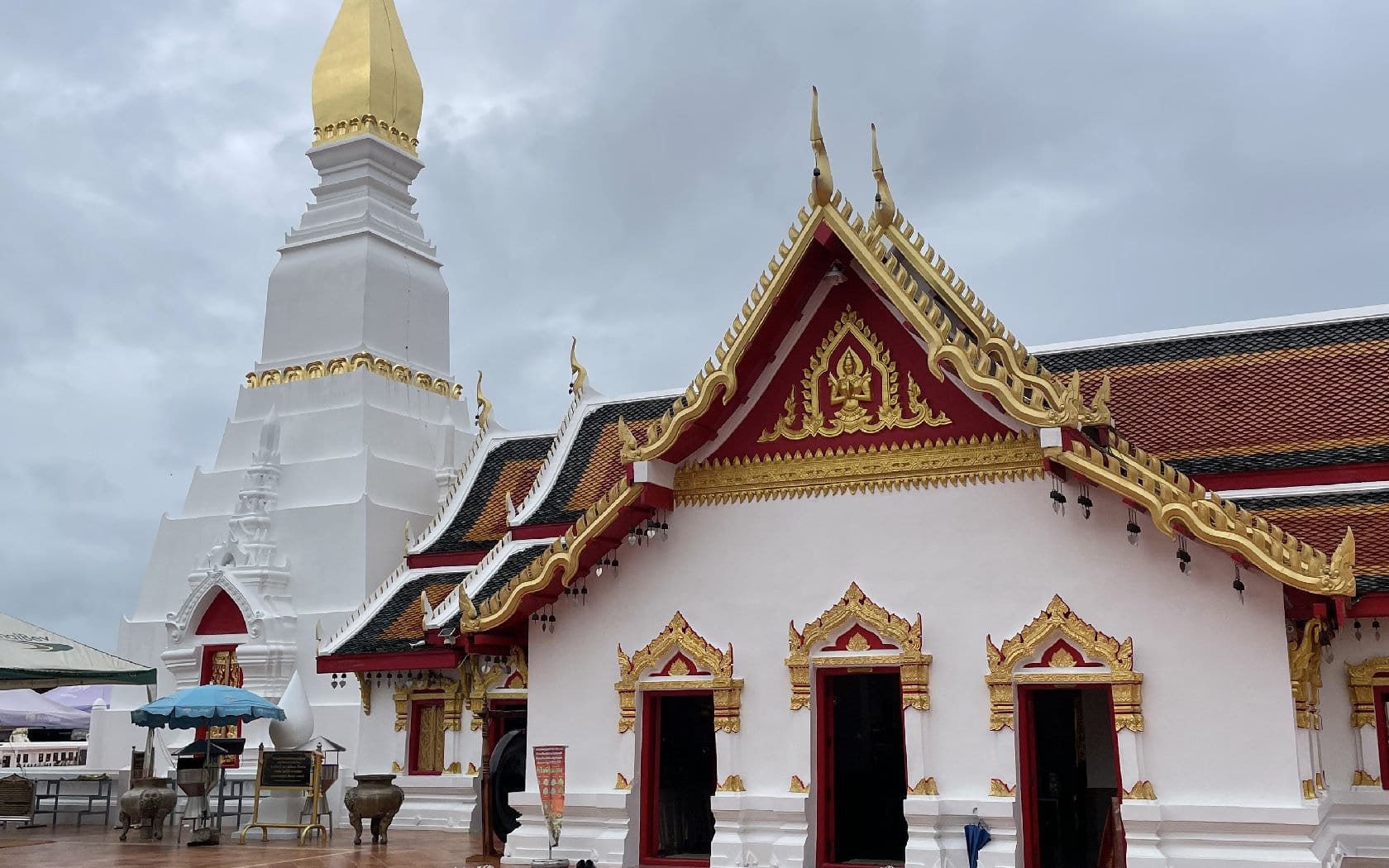
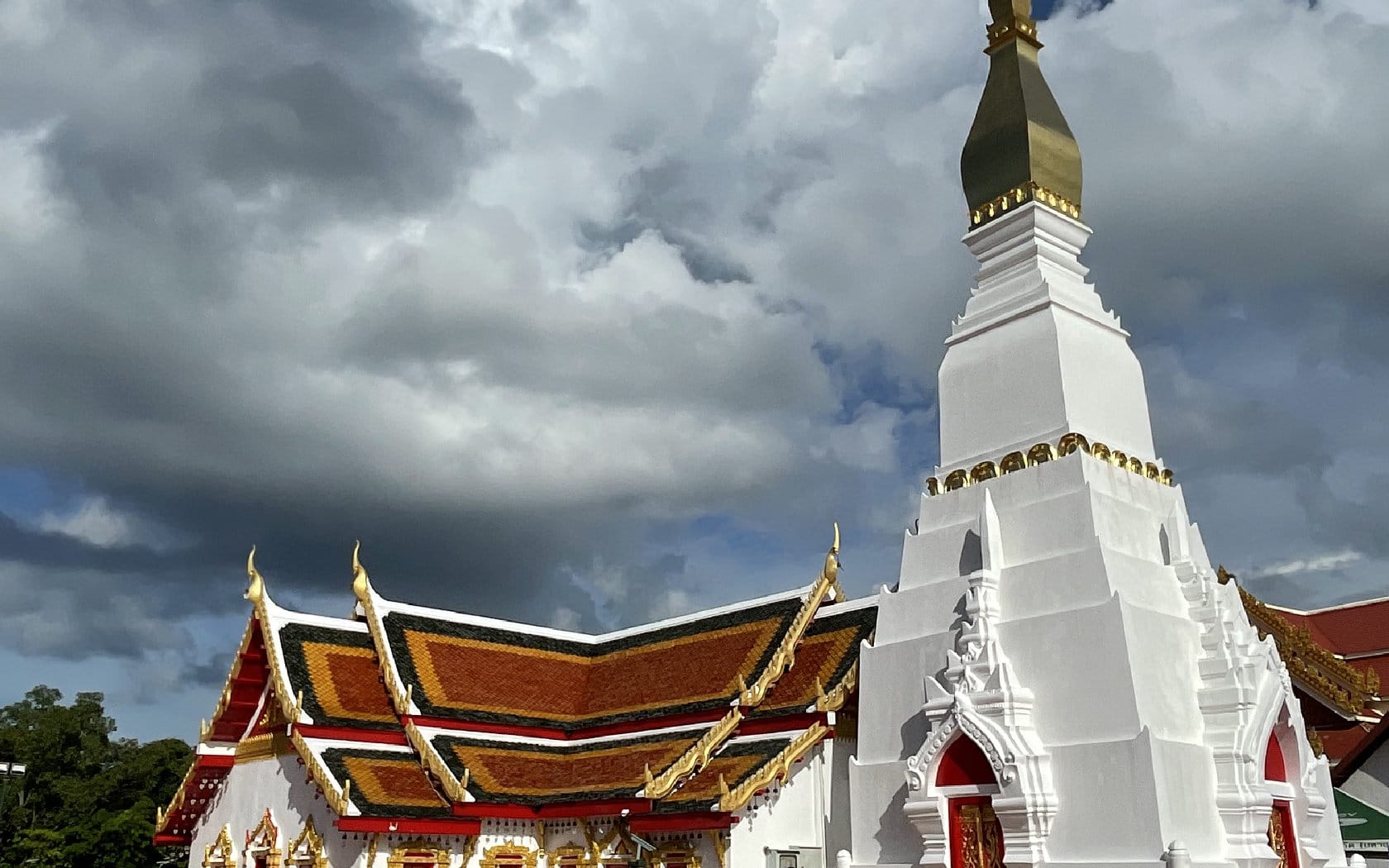
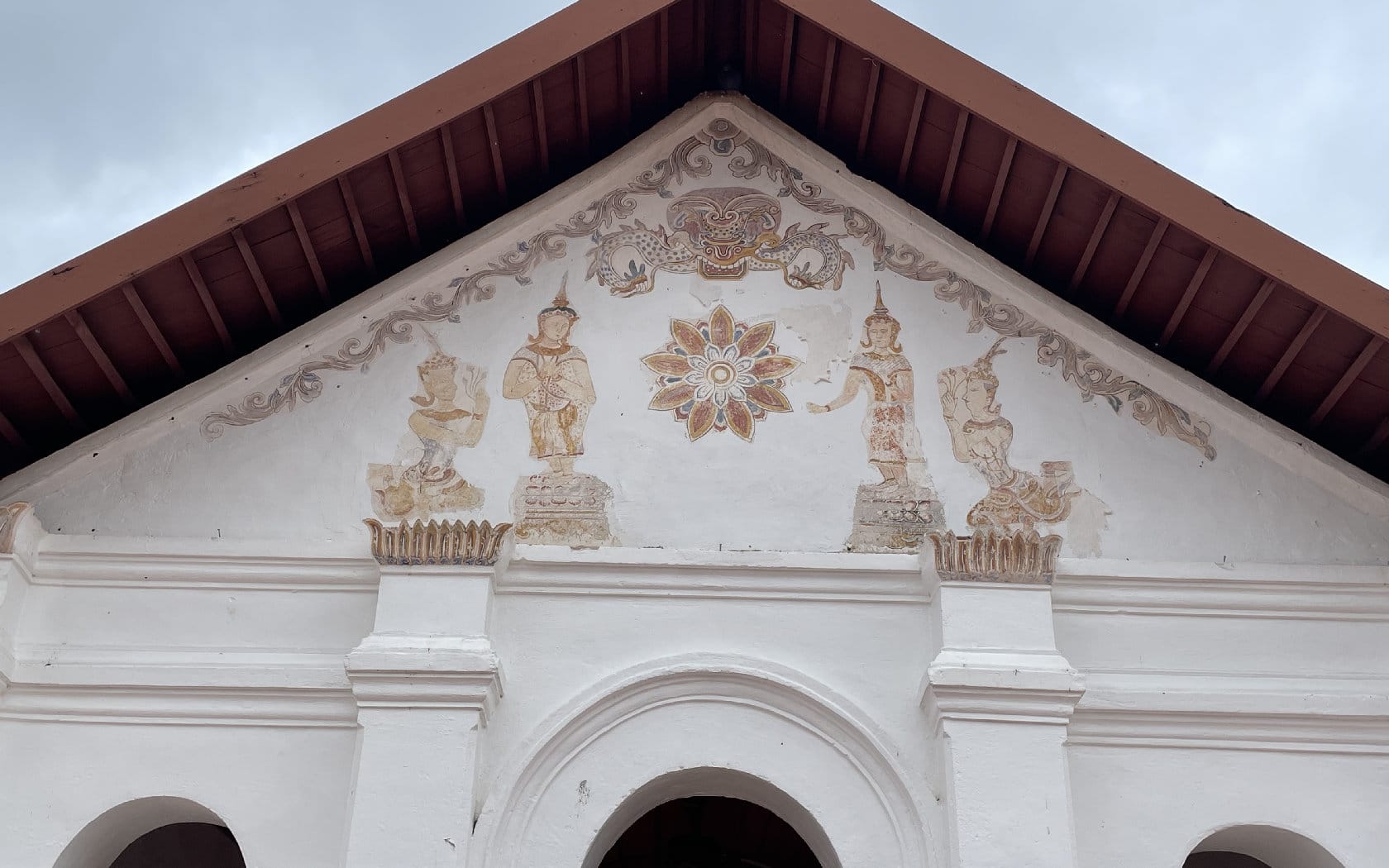
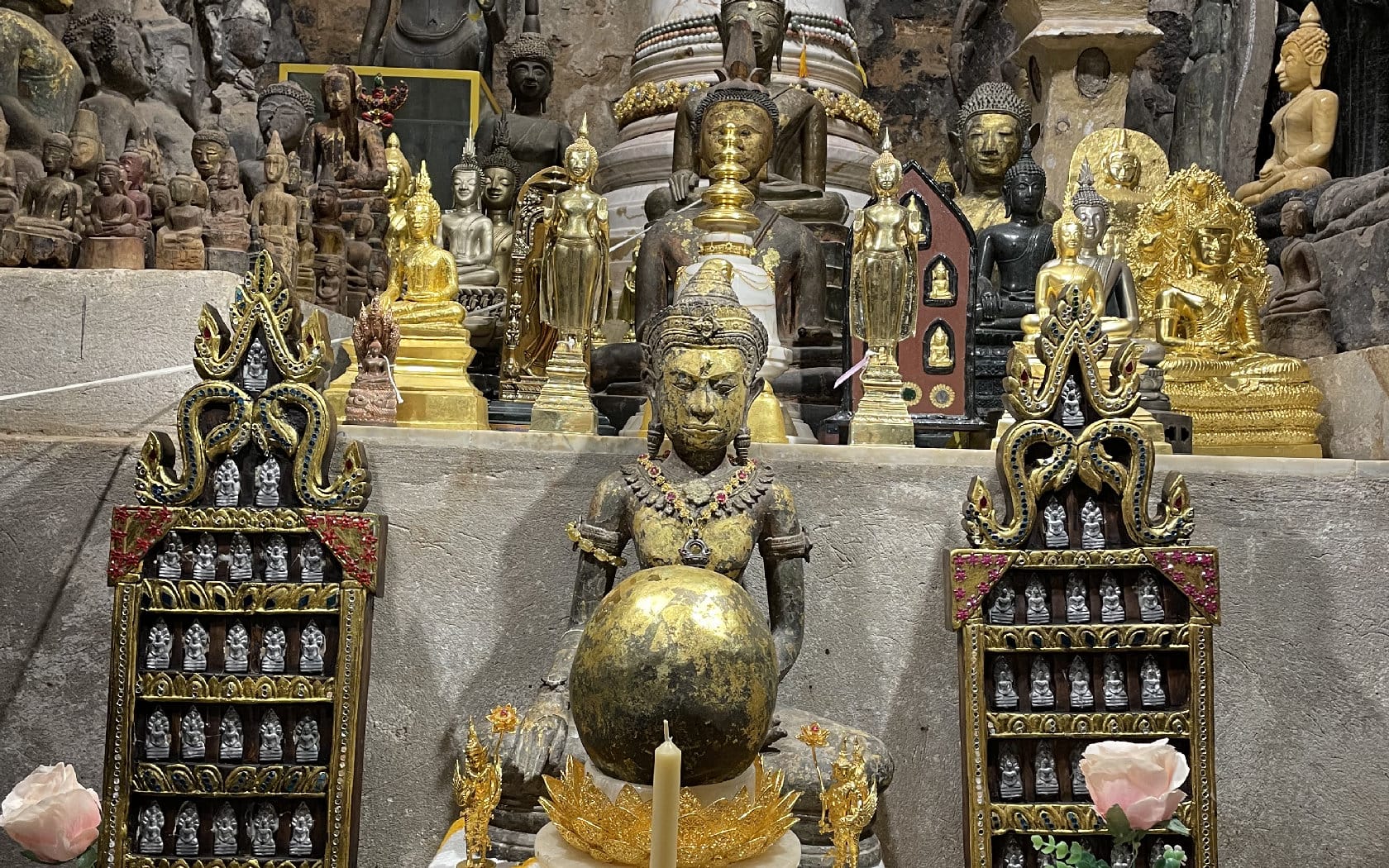
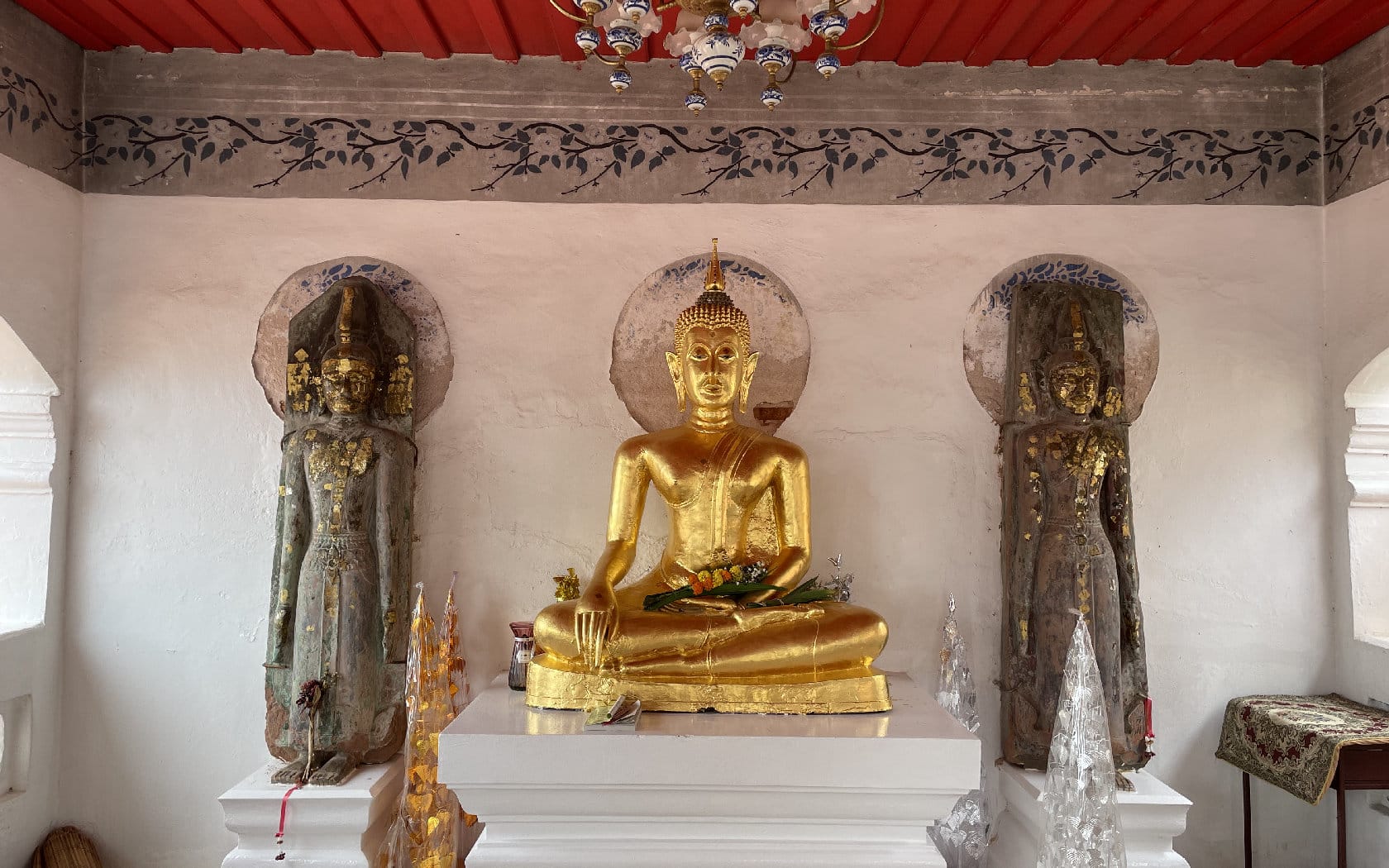
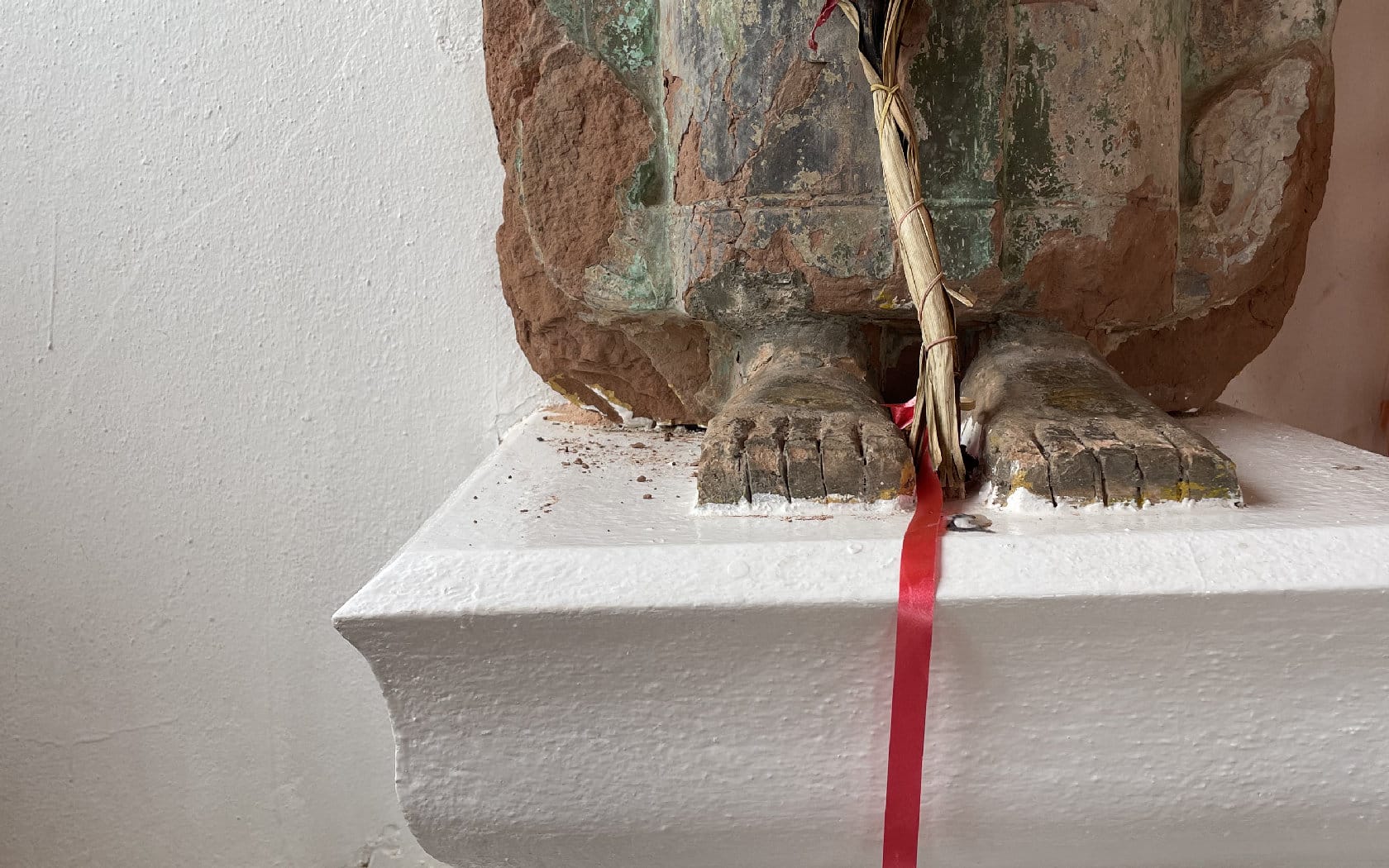
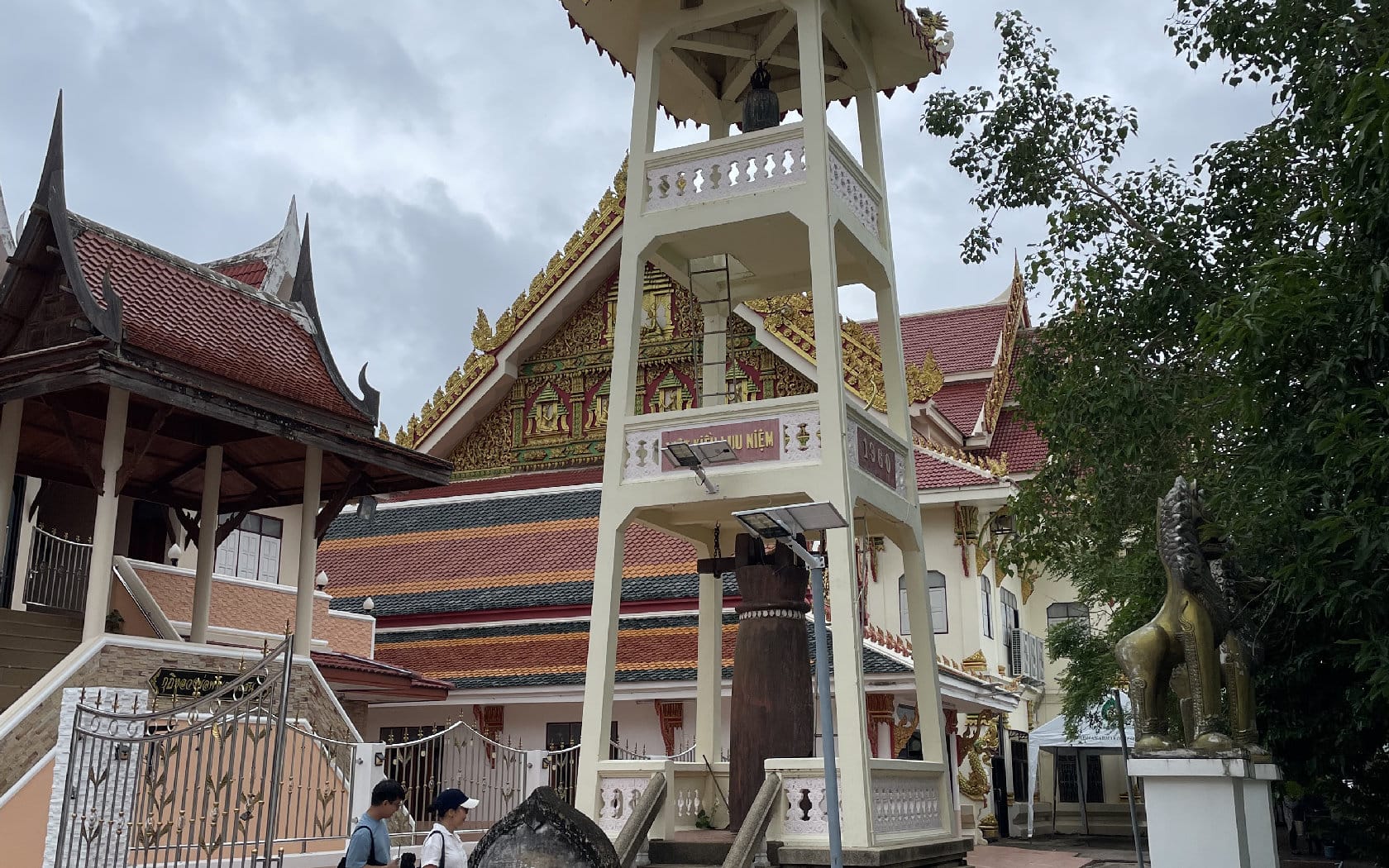
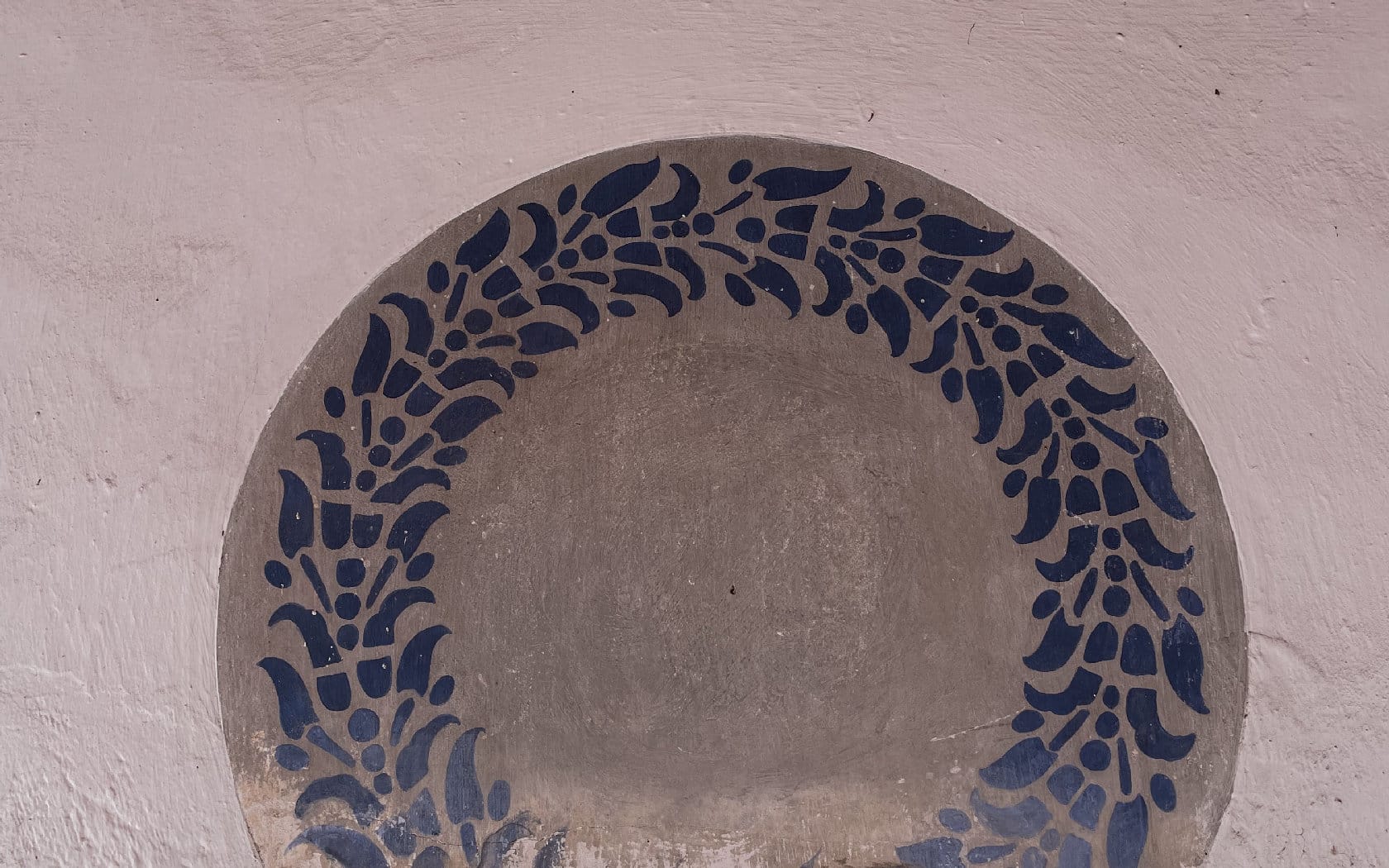
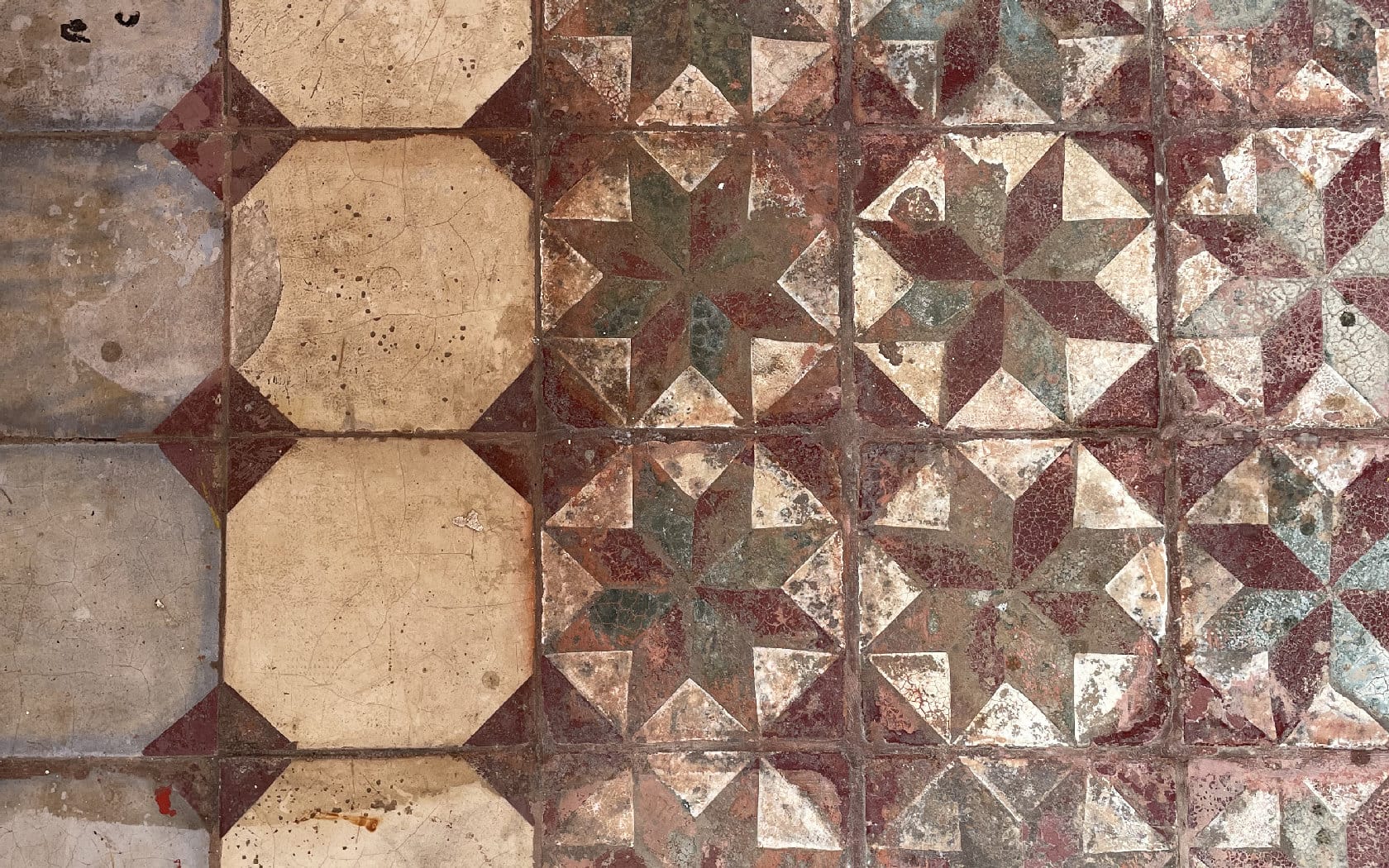
Phra That Choeng Chum
Standing proudly within the Phra That Choeng Chum Worawihan Royal Monastery, this revered stupa is the spiritual symbol of Sakon Nakhon. The lotus-shaped, square-based Lan Xang–style structure we see today was built to enshrine—and quite literally cover—the original laterite Khmer stone sanctuary that once stood here. The temple grounds also hold treasures of their own: a nearly 200-year-old ancient ordination hall (sim) adorned with delicate vine murals and celestial beings, as well as a three-story drum tower and bell tower. Although they are more recent, these towers exhibit Vietnamese architectural influences, serving as a reminder that this sacred site has historically united people of various cultures in faith.
Opening Hours: Daily, 06:00–22:00
Don’t Miss: Every January–February, the temple hosts its grand annual festival—Phra That Choeng Chum Worship Fair—featuring a spectacular ritual dance performed by more than 5,000 graceful dancers in honor of the stupa.
3
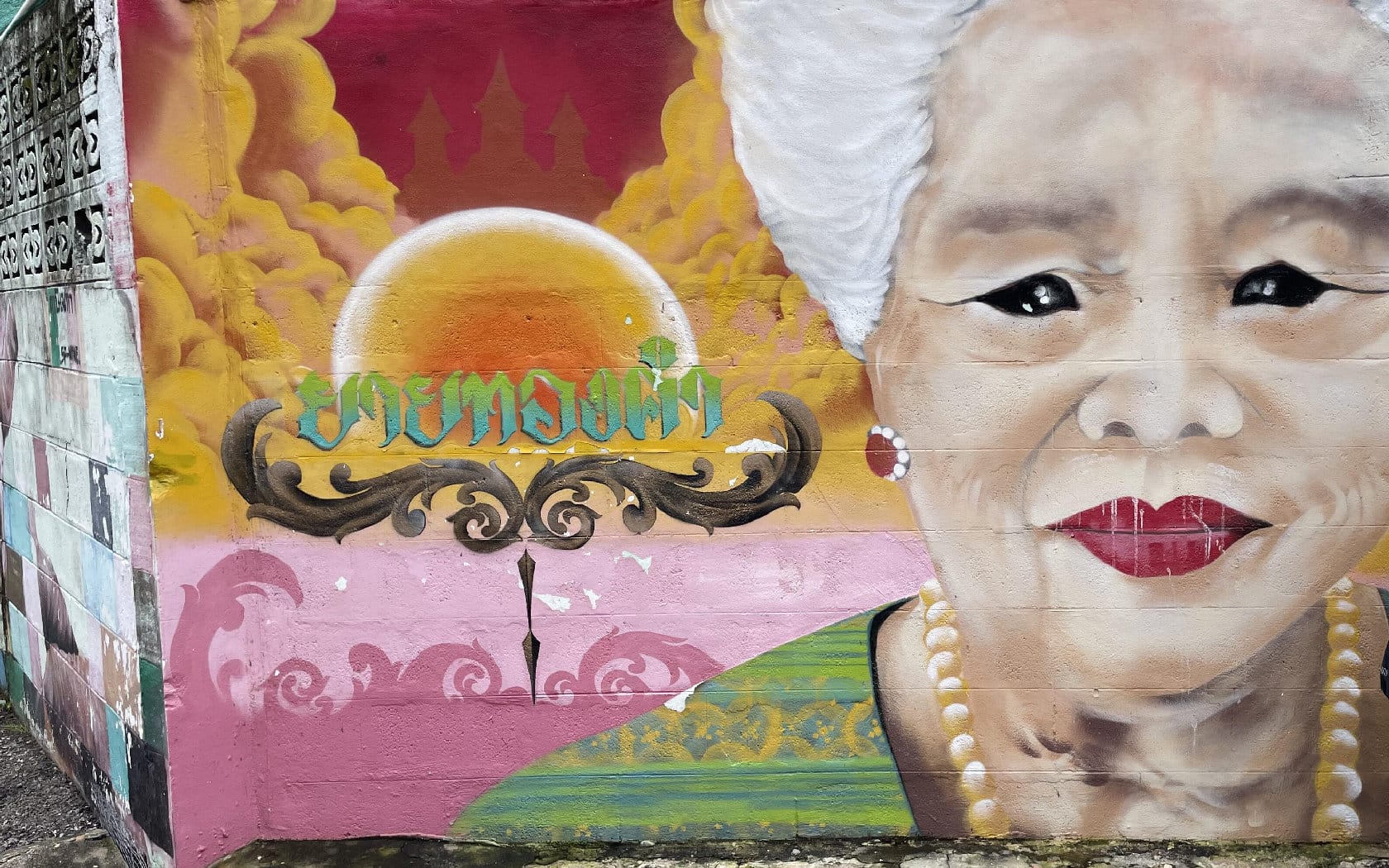
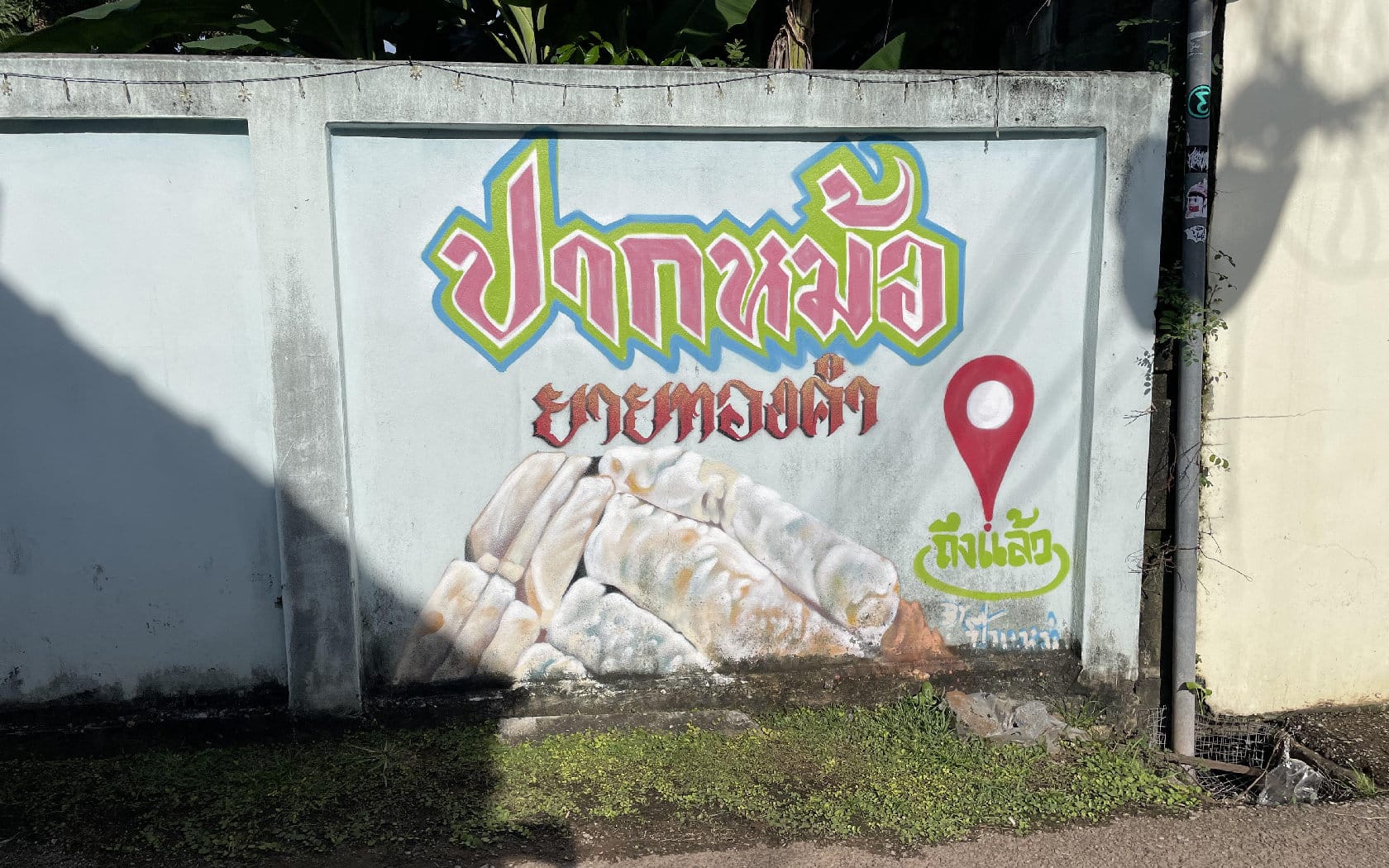
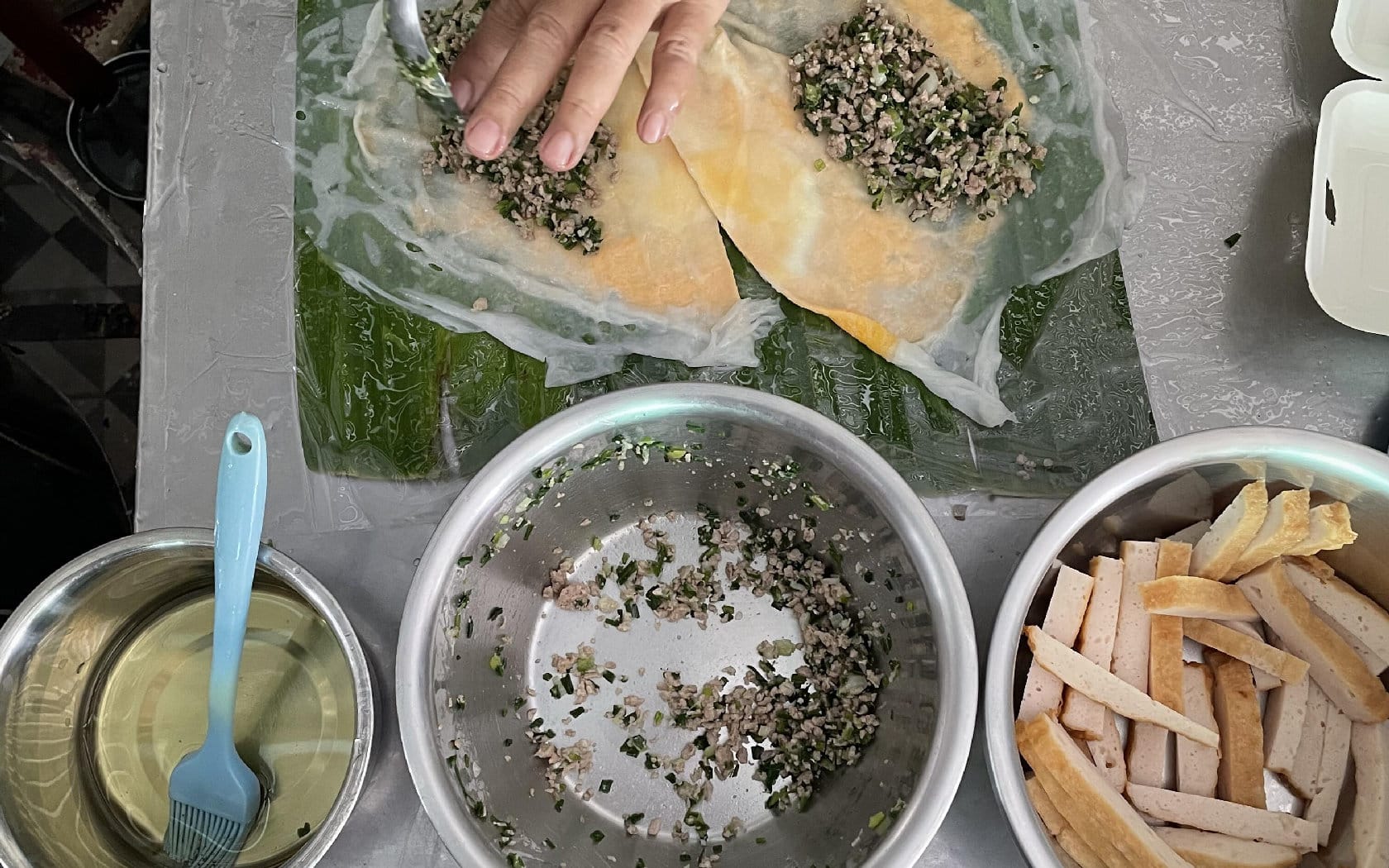
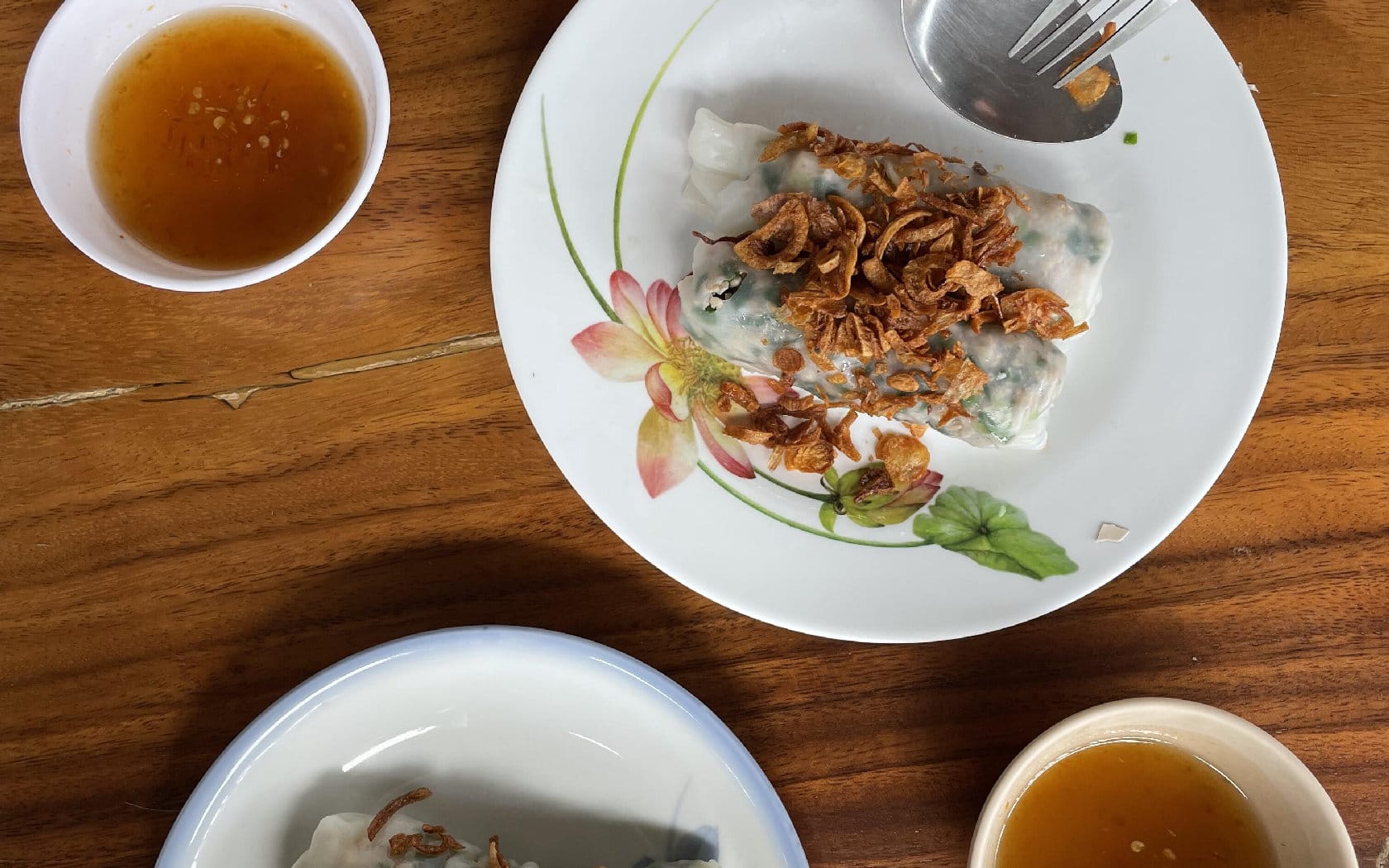
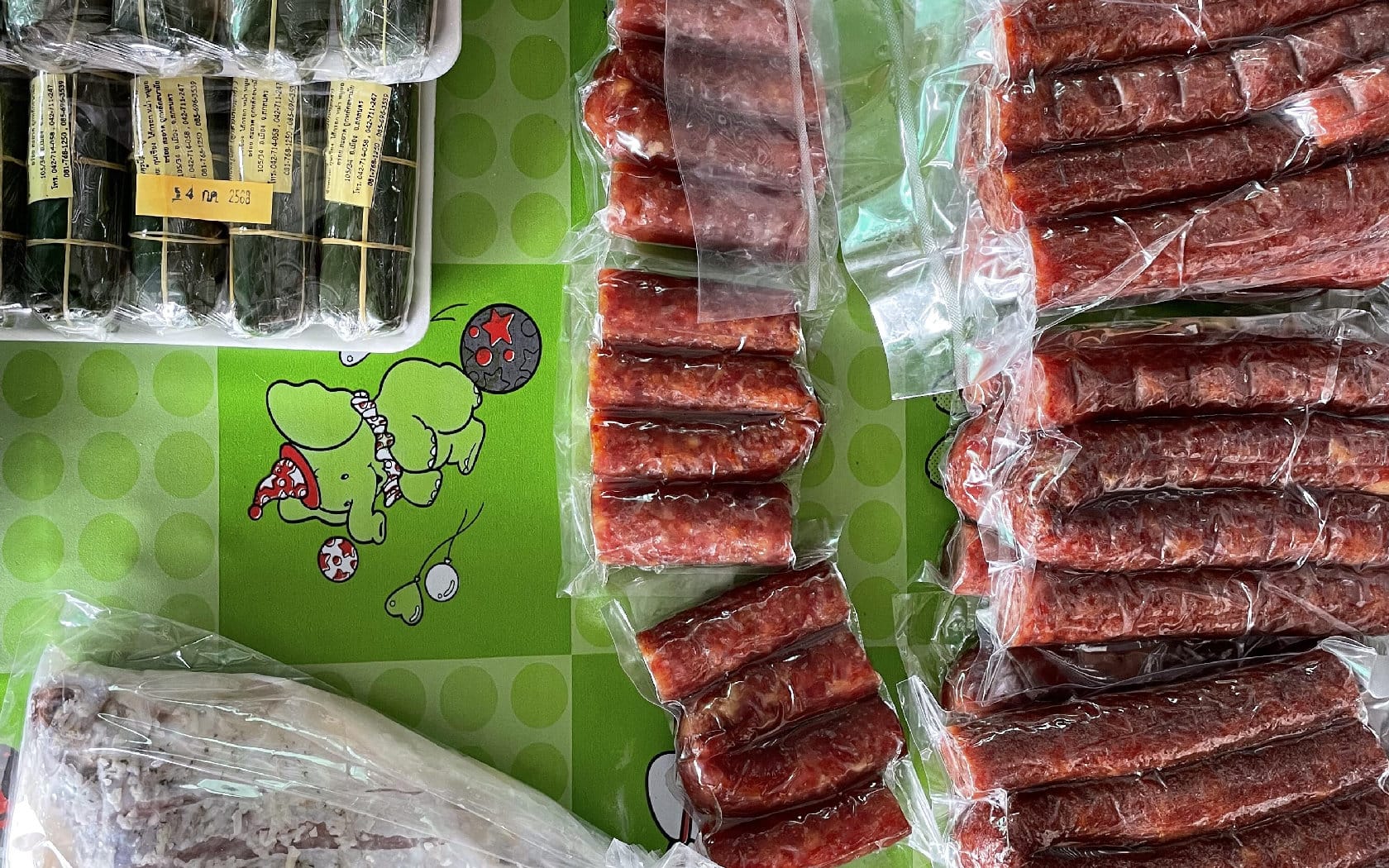
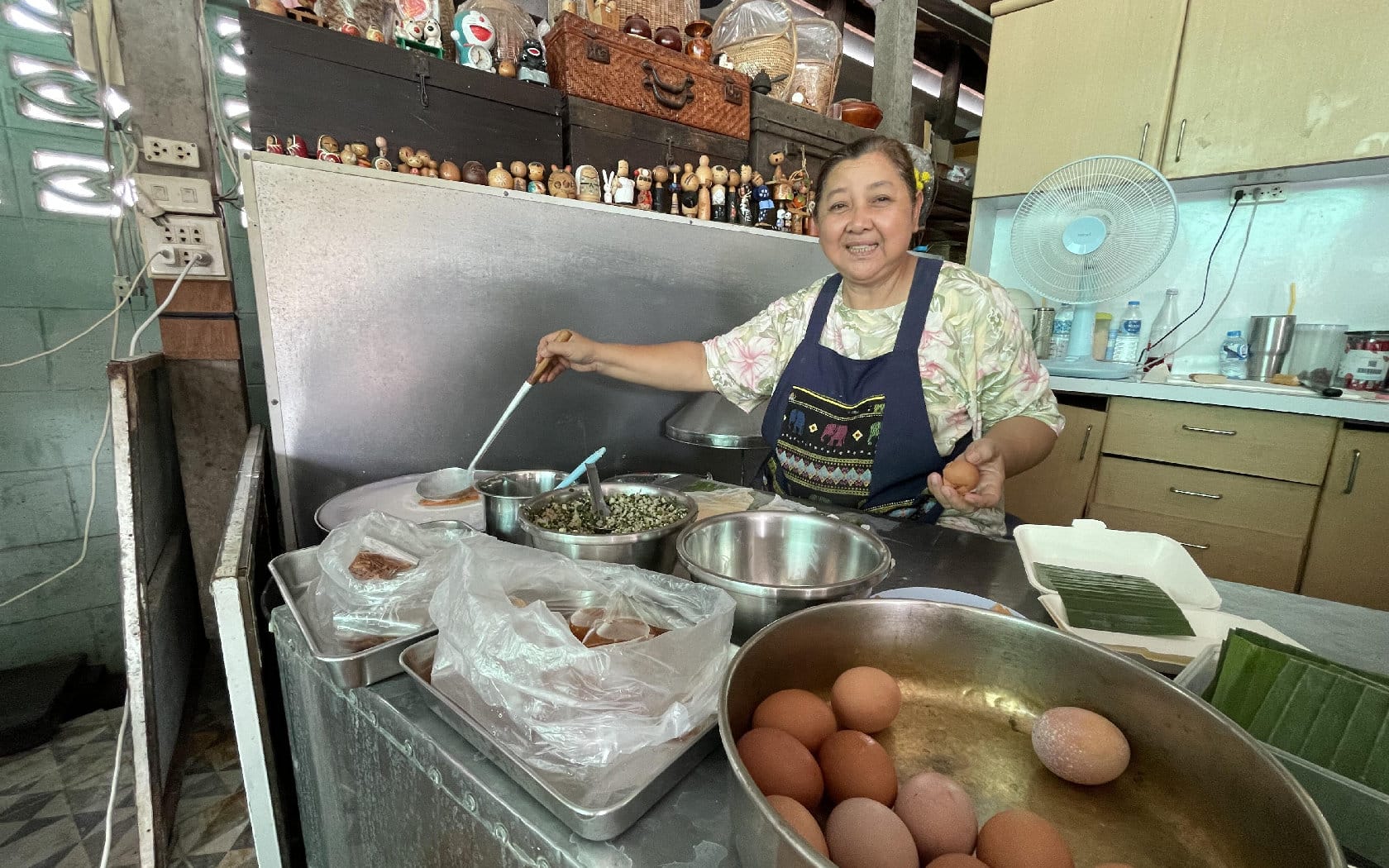
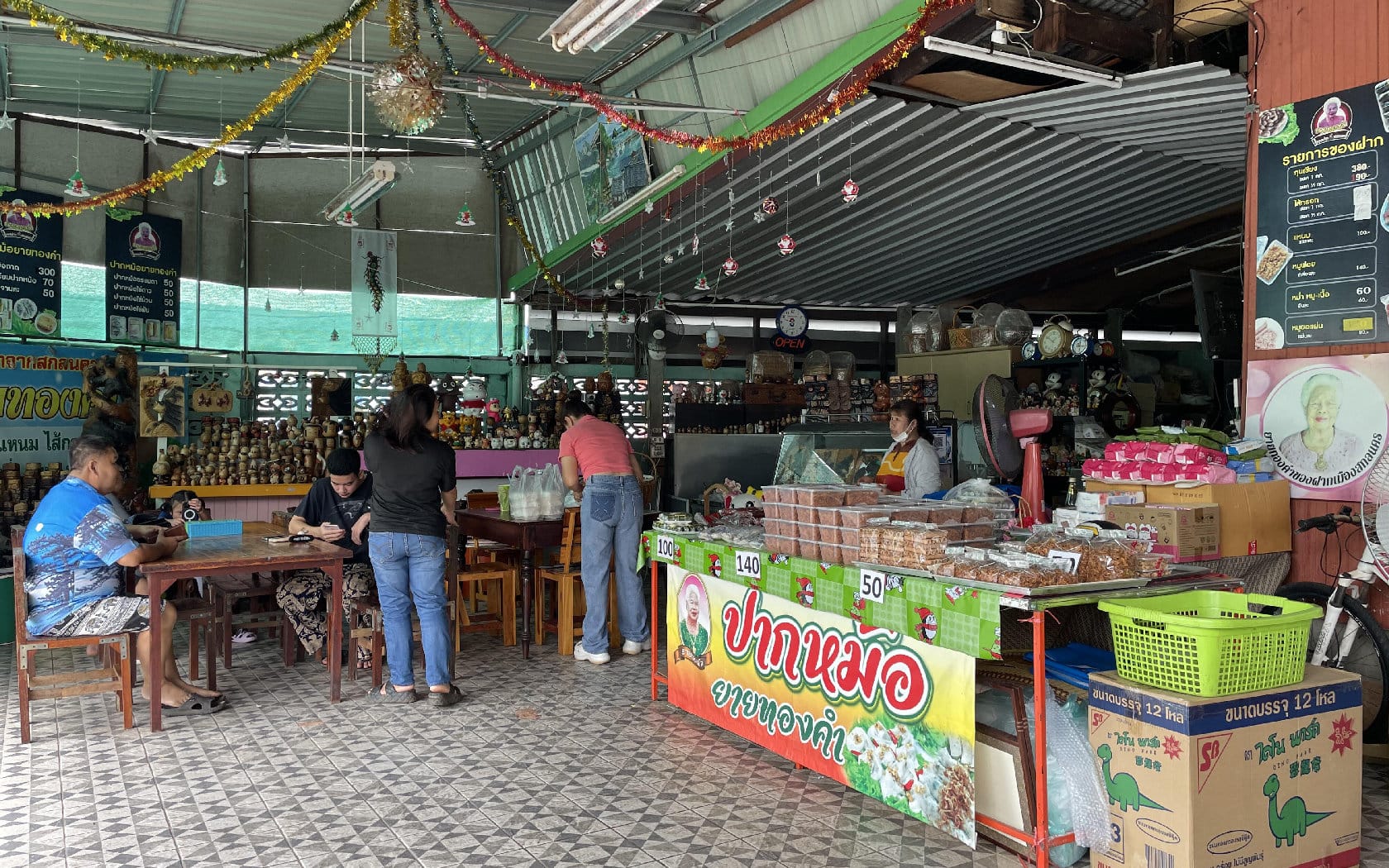
Grandma Thongkham Chinese Sausage Shop
In the heart of Sakon Nakhon’s Old Town lies a beloved souvenir shop with decades of history—famed for its signature Chinese sausage (kun chiang). Grandma Thongkham, the matriarch behind the counter, swears by her secret: pure lean pork, no flour, no borax, and no preservatives. From this signature recipe, the shop has expanded into other local favorites—Isan sausage, fermented pork (naem), and shredded pork—all just as popular. These days, Auntie Maem, Grandma’s daughter, joins her to introduce a new crowd-pleaser: steamed rice-skin dumplings (pak mor). What began as a family treat became a local legend after Grandma served them at a temple fair, where they were so loved that customers begged her to sell them at home. These dumplings, made with only the finest ingredients, are available in four irresistible styles—classic, with fried egg, rolled omelet, or folded egg wrap—and areserved with a thick, flavorful dipping sauce that keeps everyone coming back for more. Opening Hours: Daily, 08:00–18:00
Tel: 08 8321 2502
4
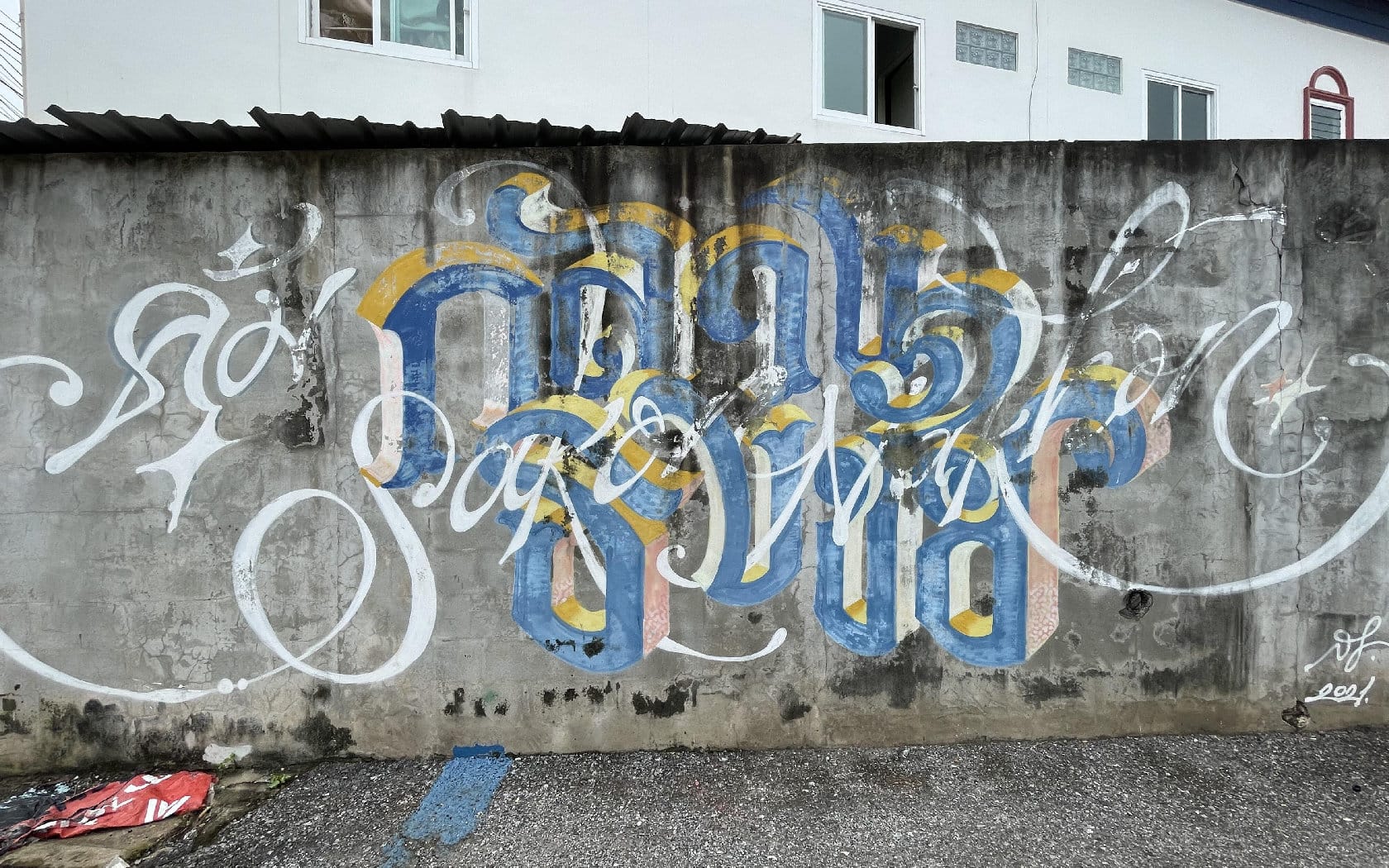
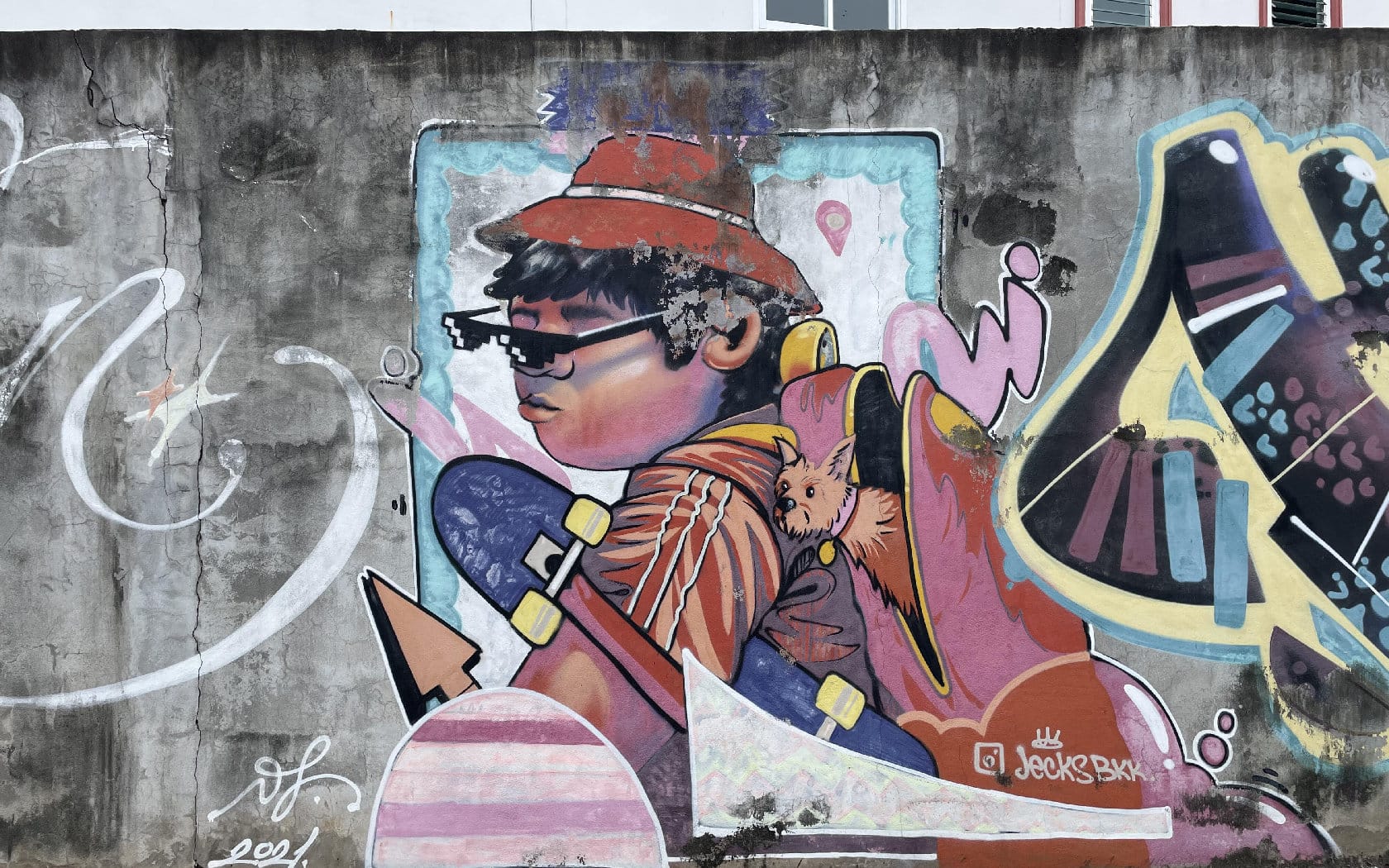
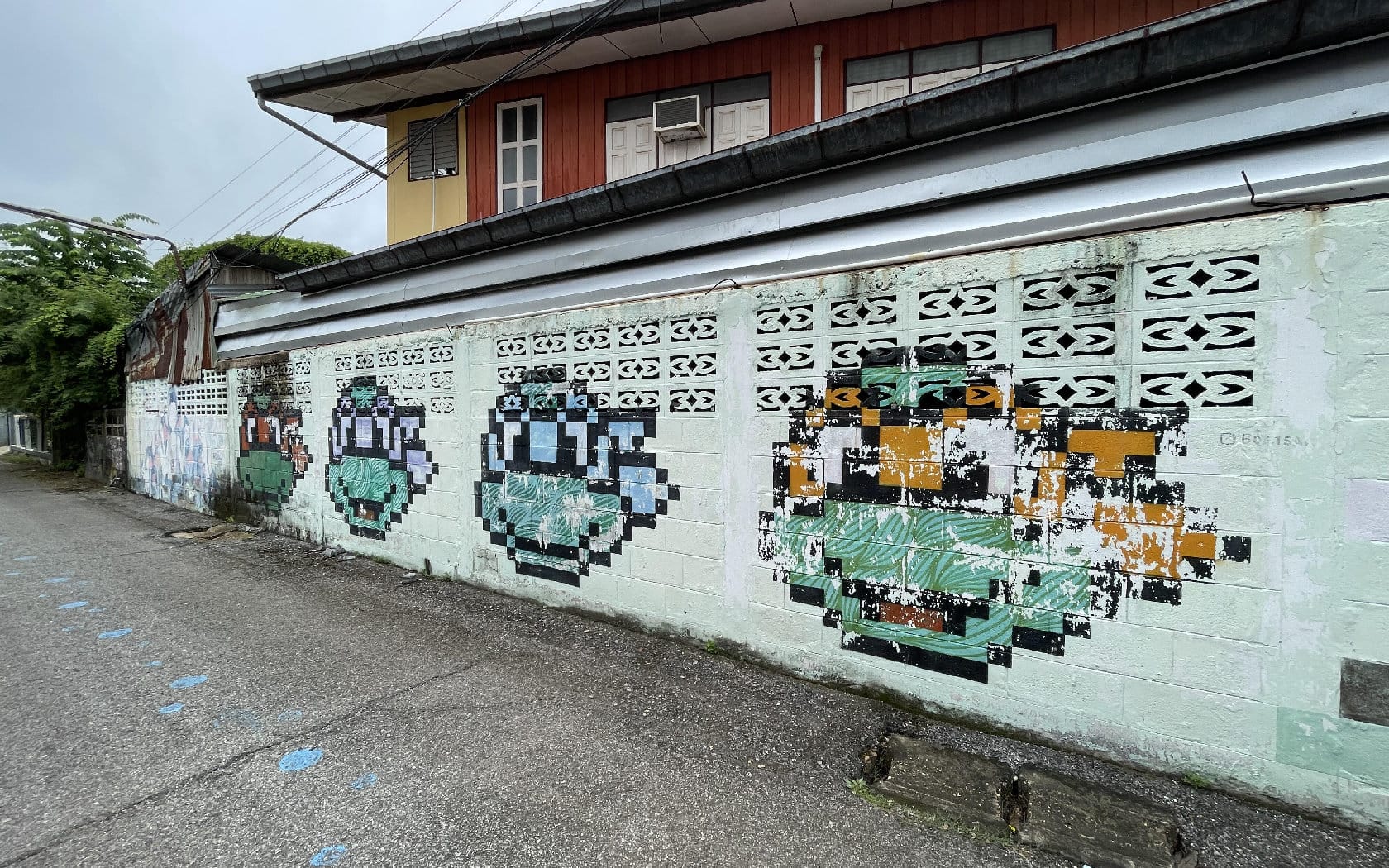
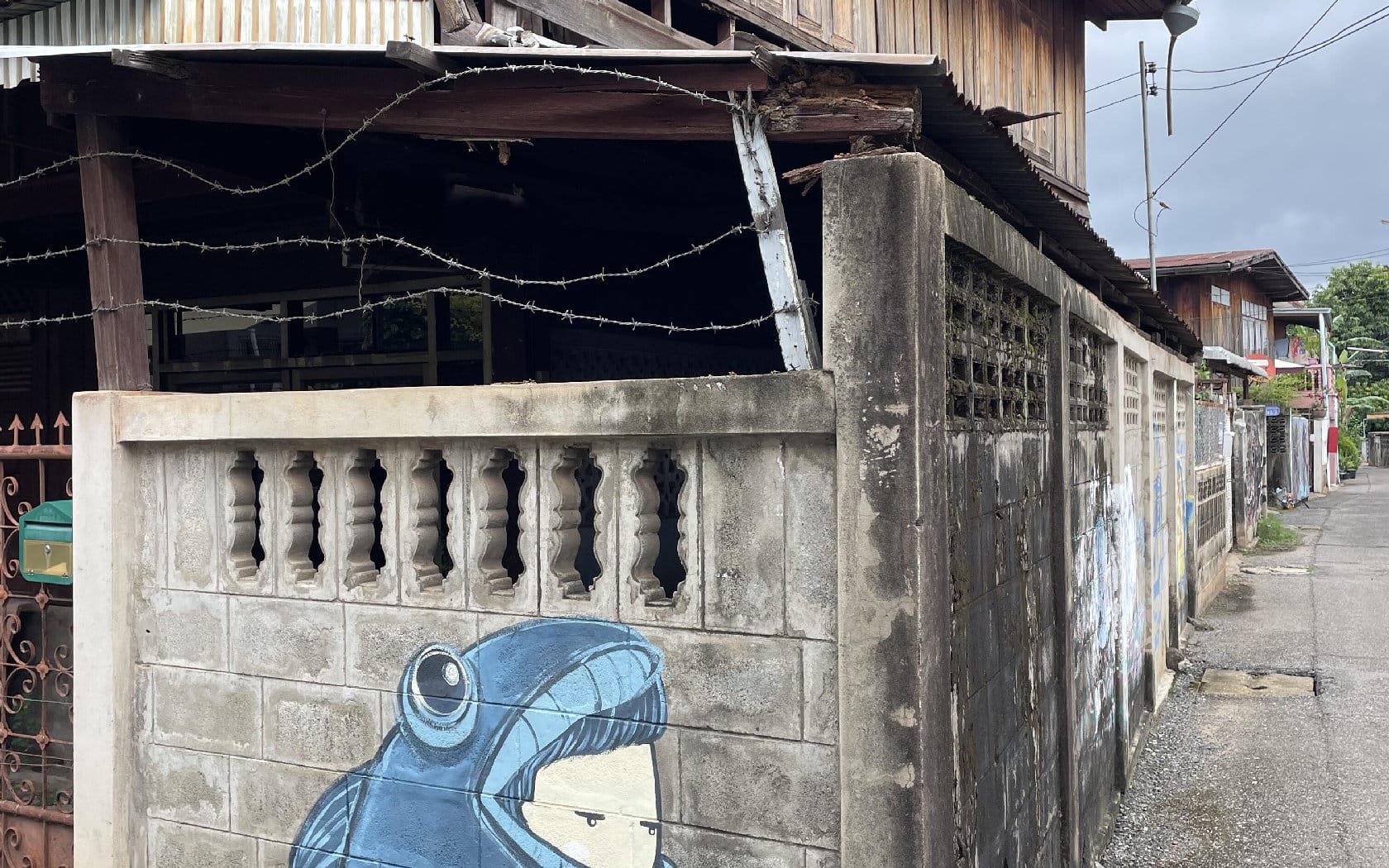
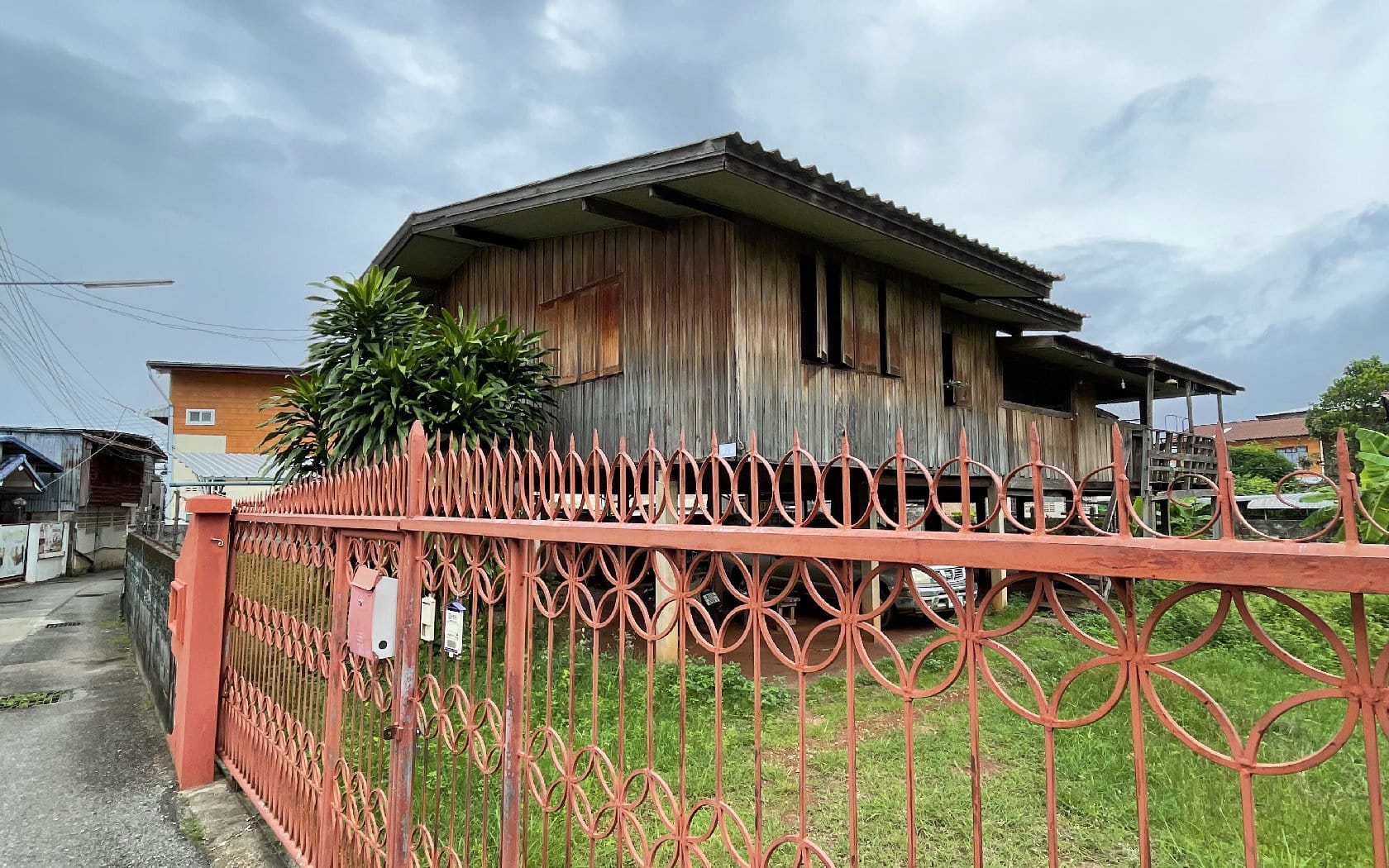
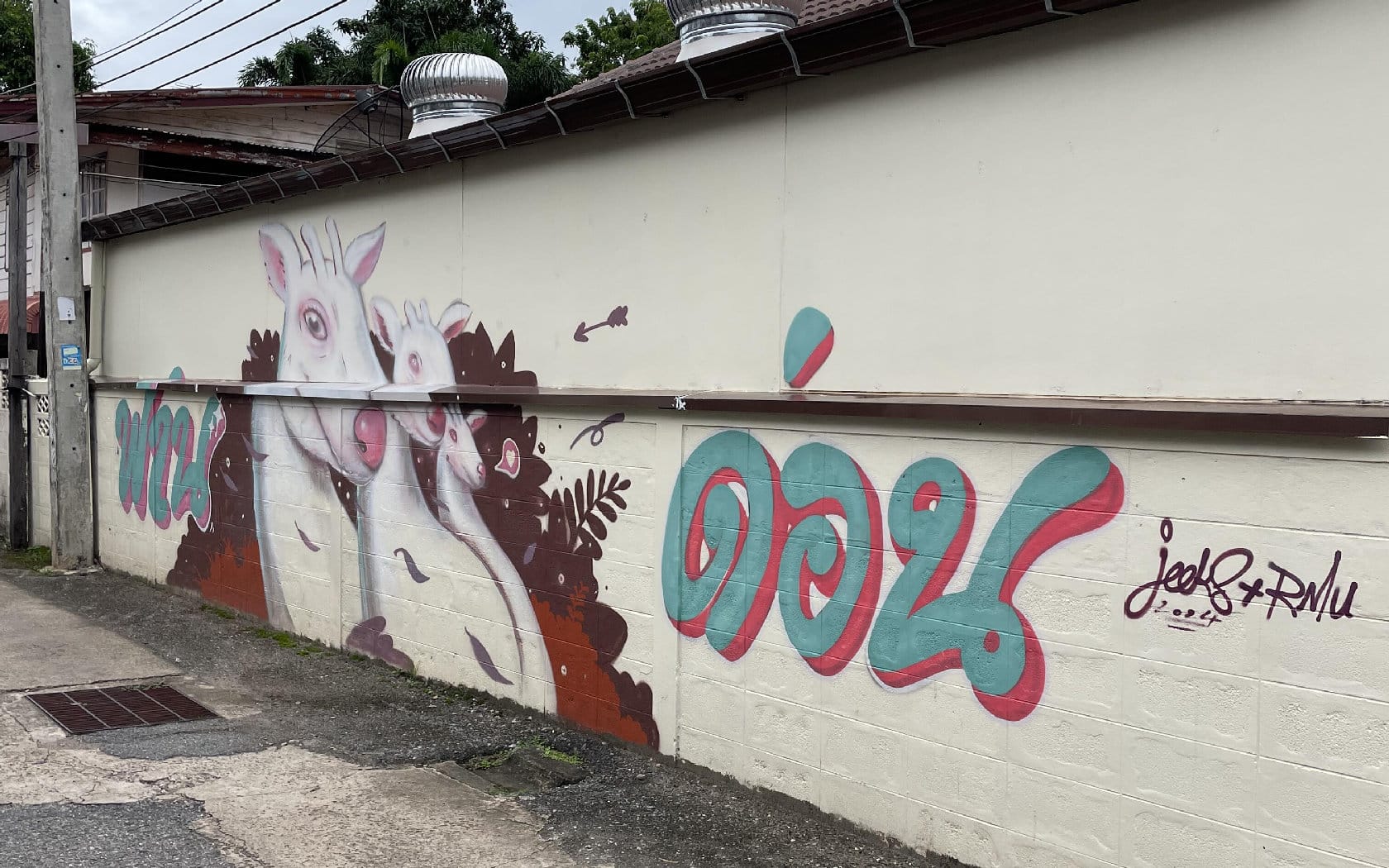
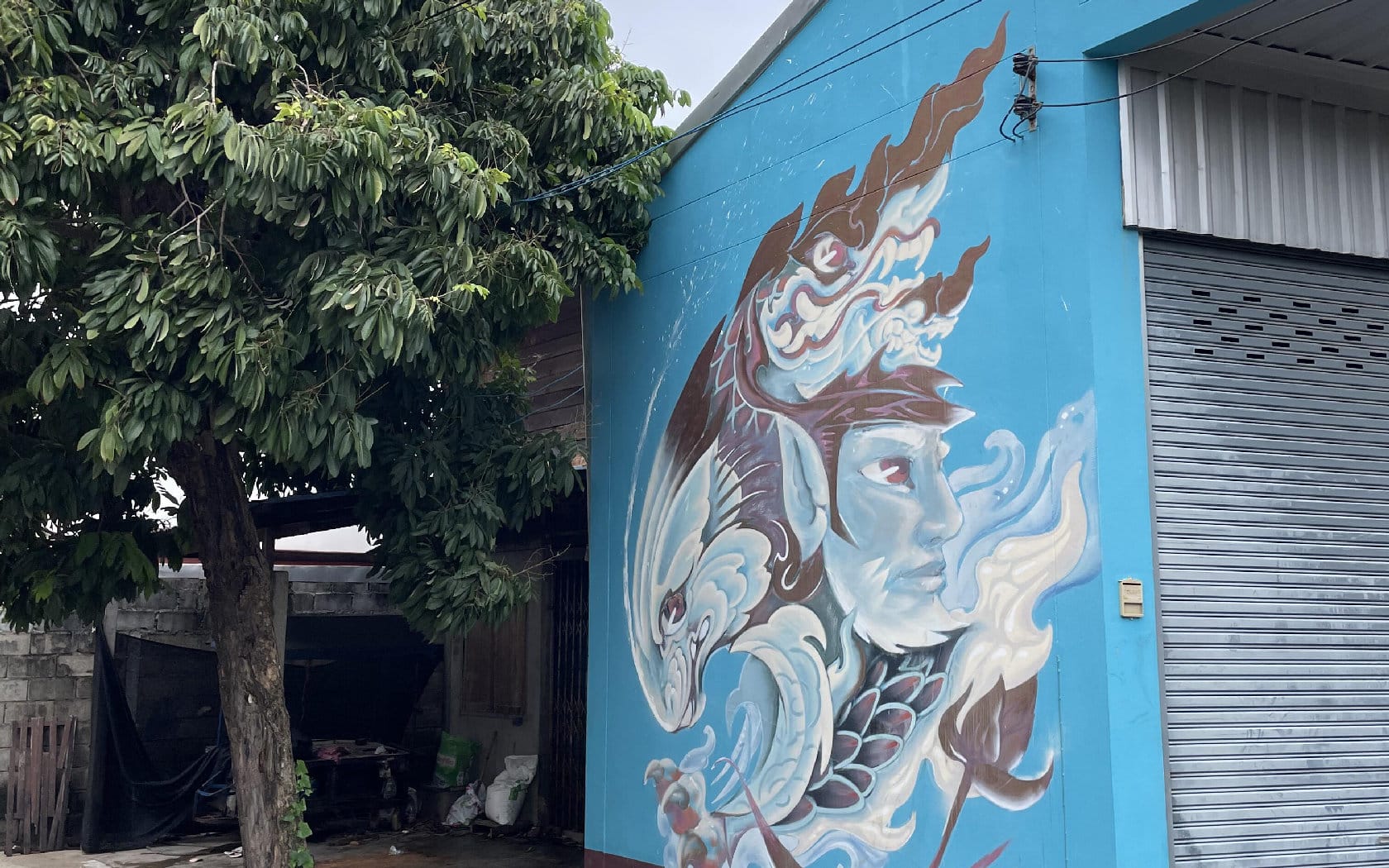
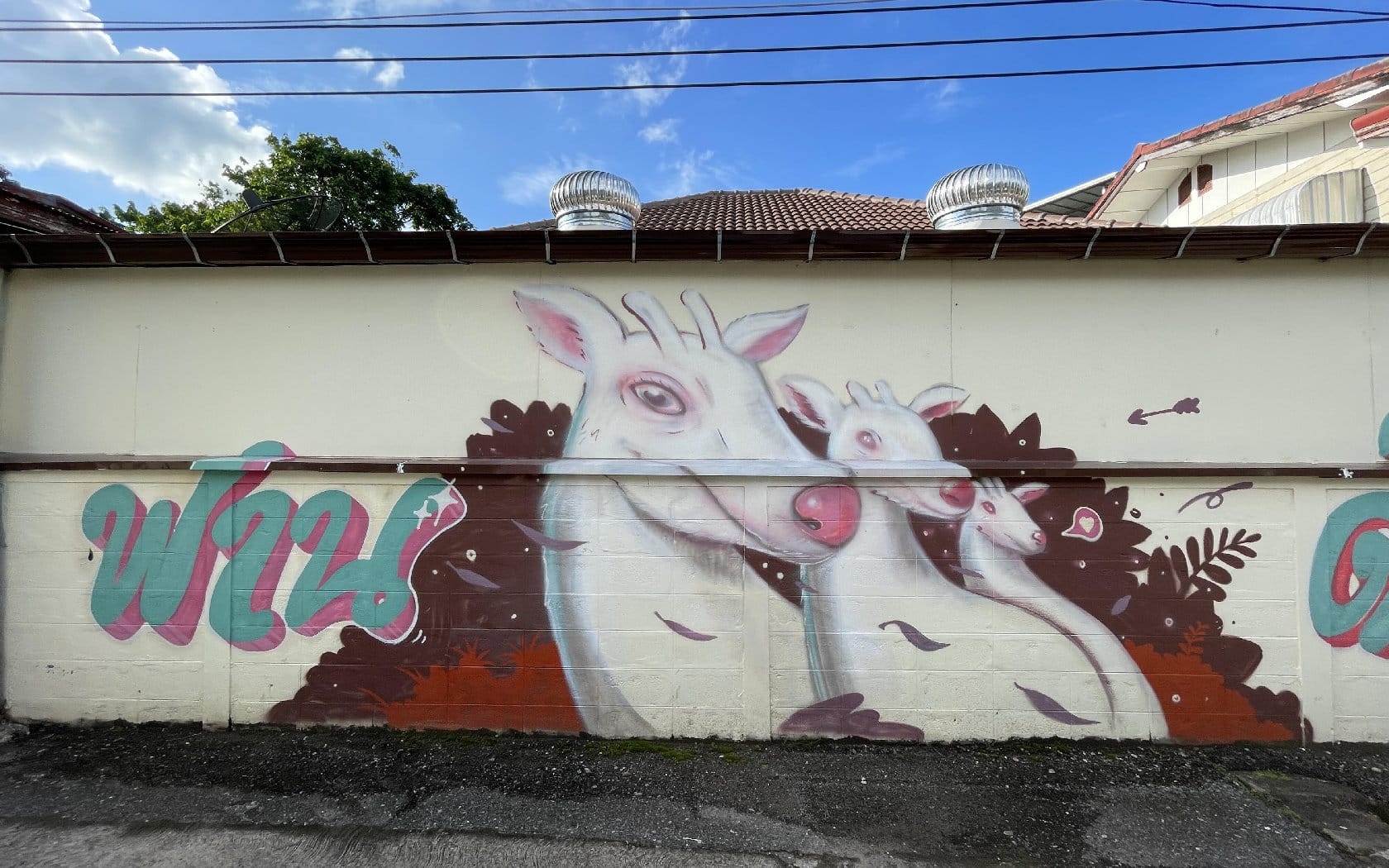
Klang Thongchai Community
Travel back in time to Klang Thong Chai, the inaugural neighborhood of Sakon Nakhon’s Old Town. Its origins trace back to the Thonburi era, when the deputy ruler of Kalasin was ordered to bring his family to settle in Ban That Choeng Chum to safeguard the sacred Phra That Choeng Chum. The community grew following the traditional Thai concept that temple and neighborhood stand side by side, supporting each other as the heart of daily life. Many of today’s residents are direct descendants of those original settlers. While history still lives in its lanes, Klang Thong Chai has embraced the present, weaving modern touches into its heritage. Street art now dots the neighborhood, telling local stories and adding a fresh, creative vibe to this historic quarter.
5
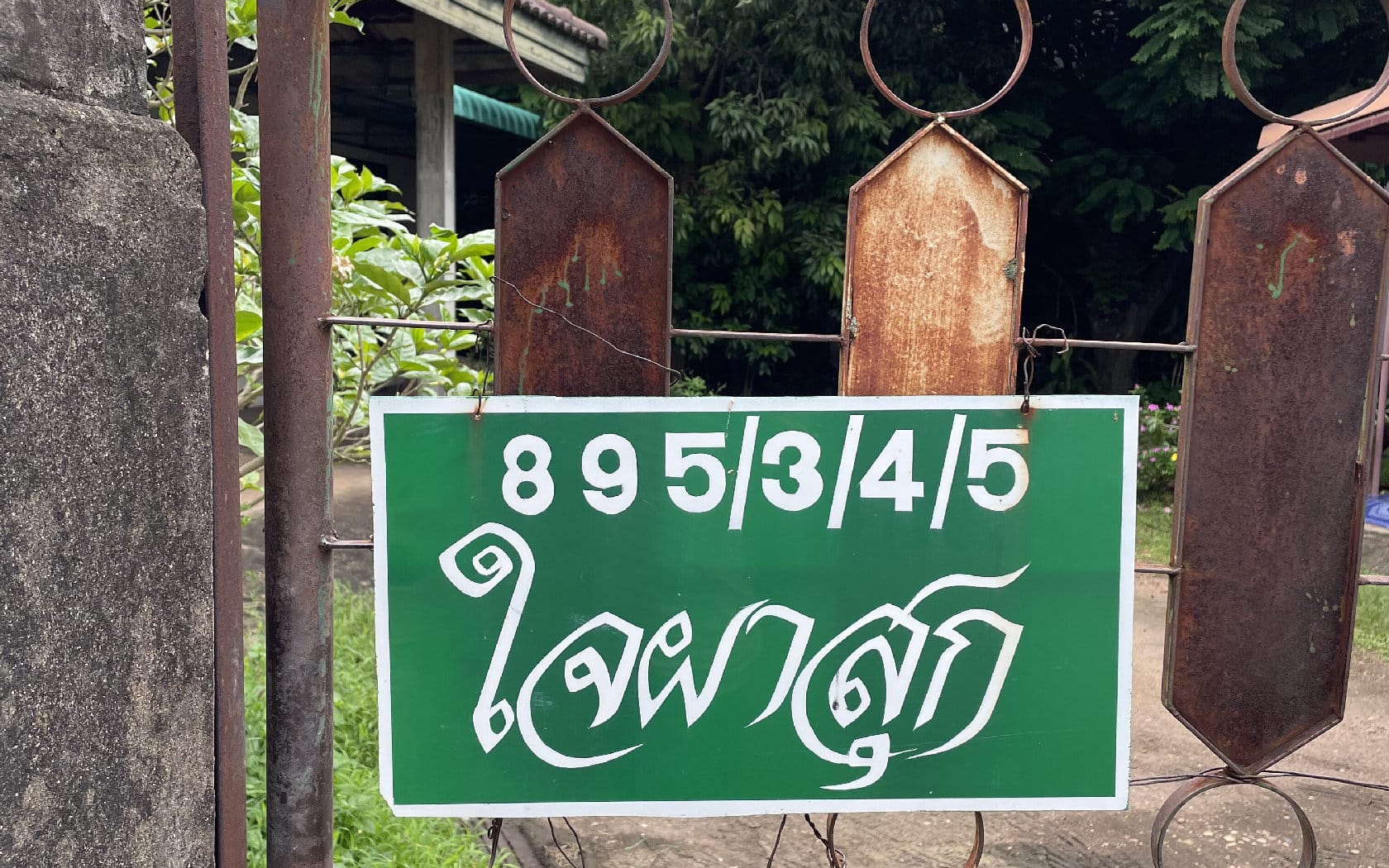
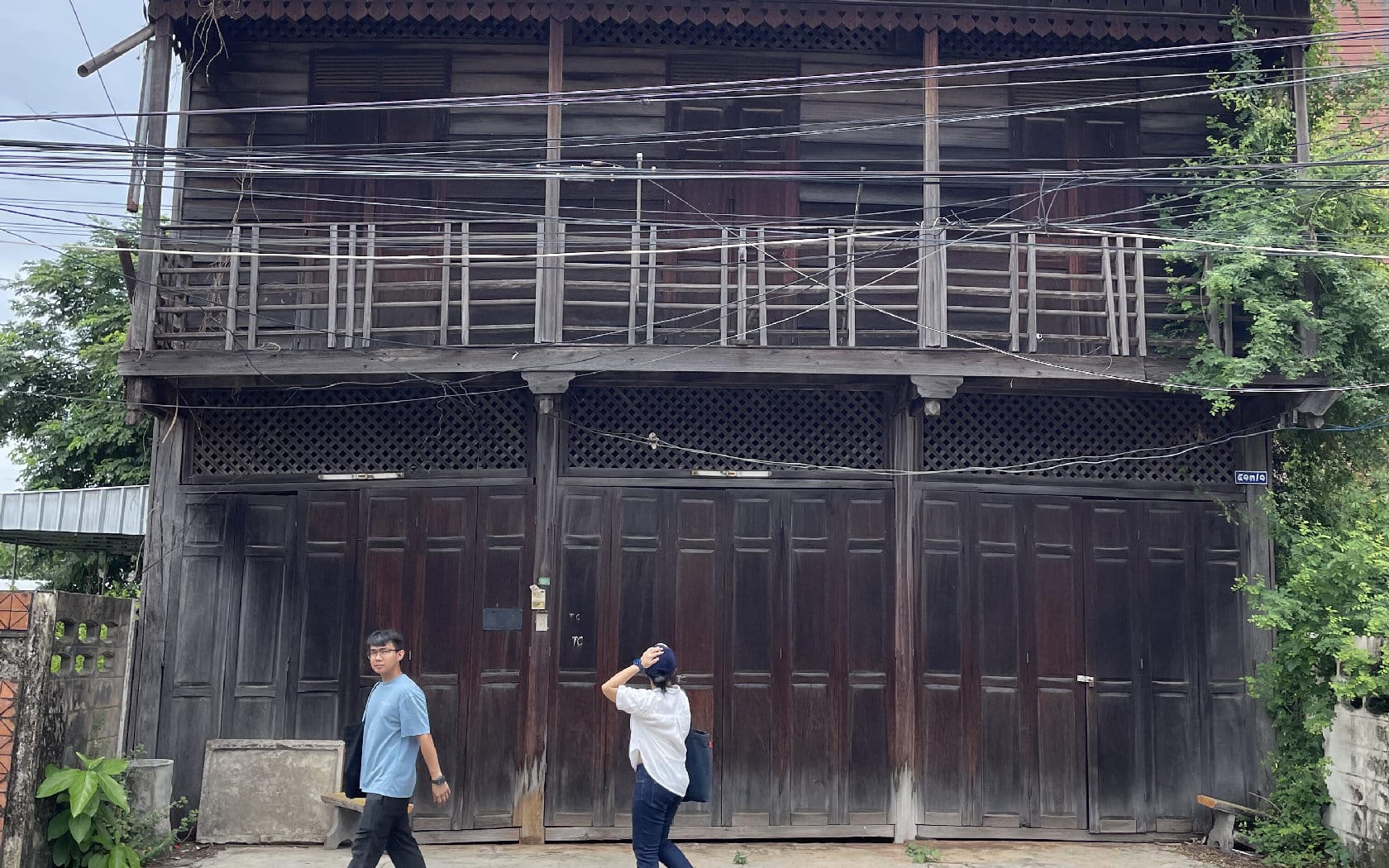
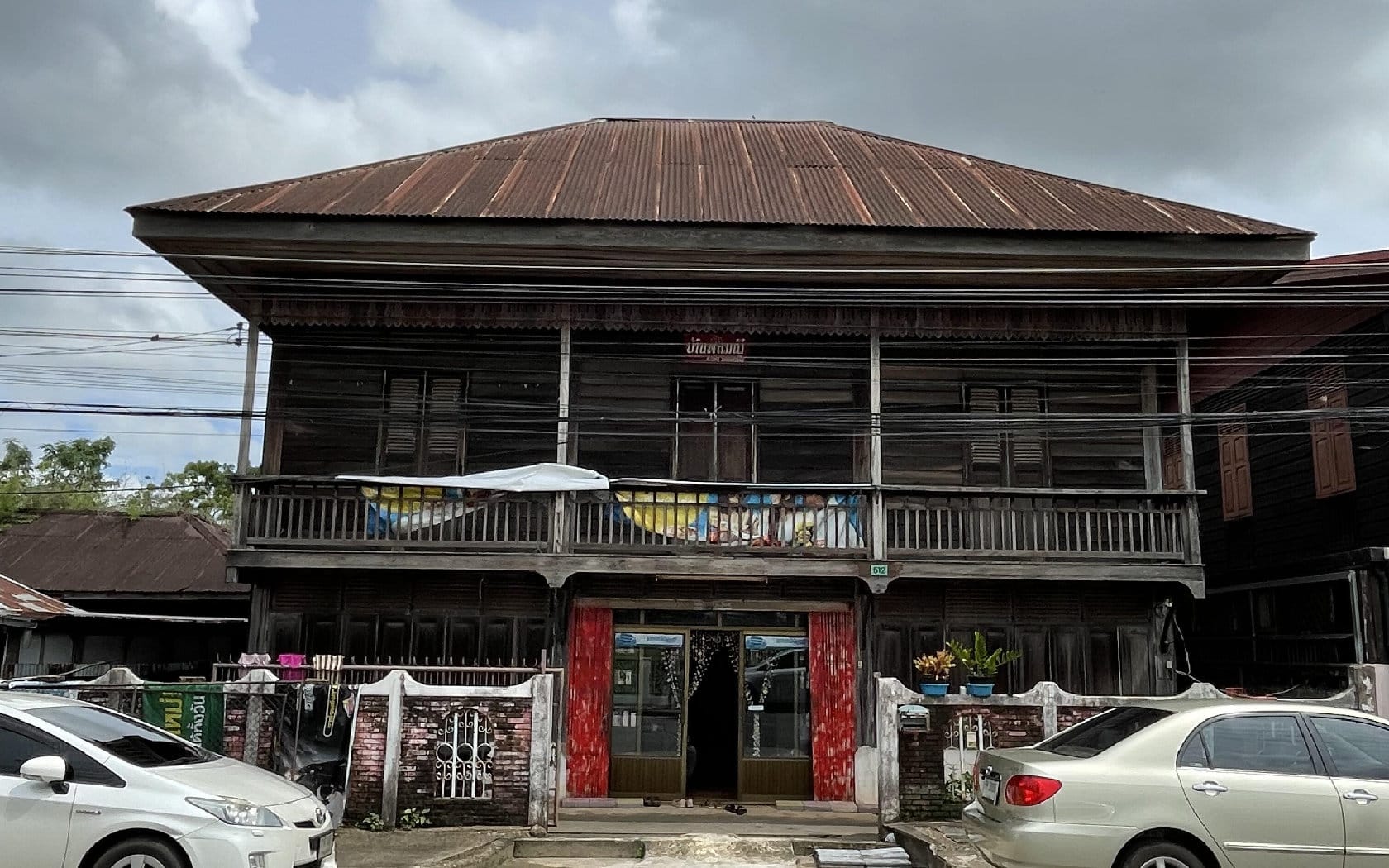
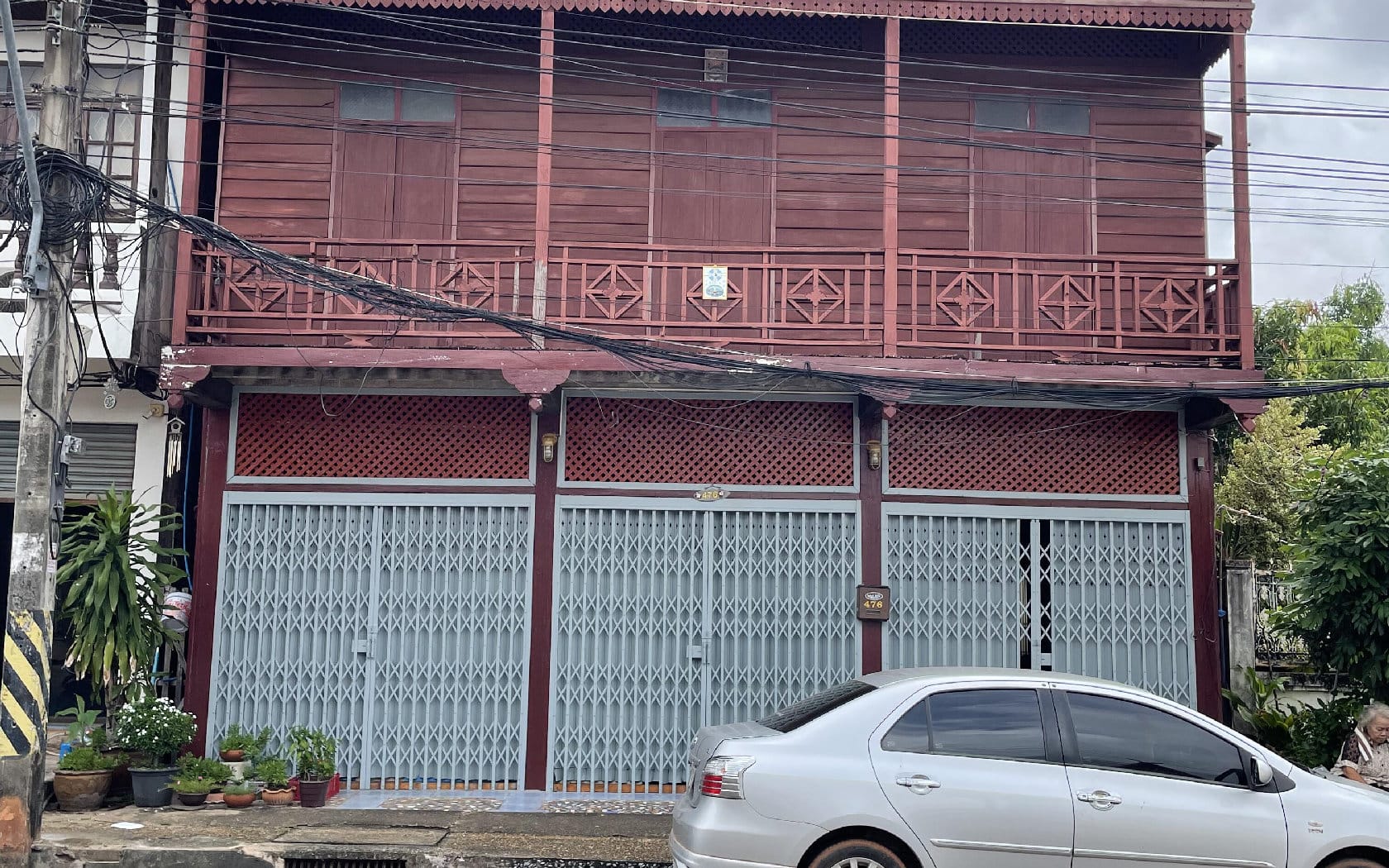
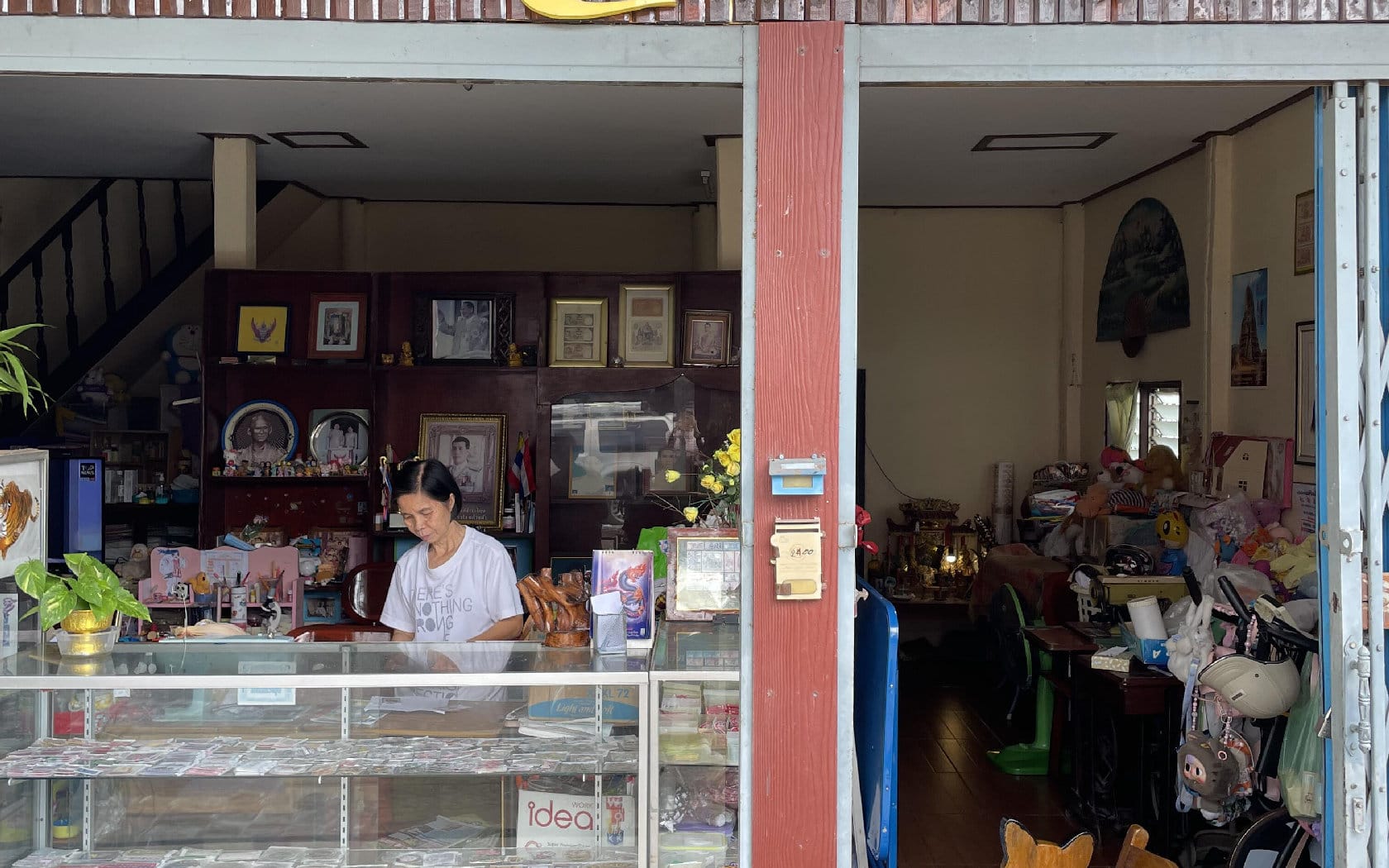
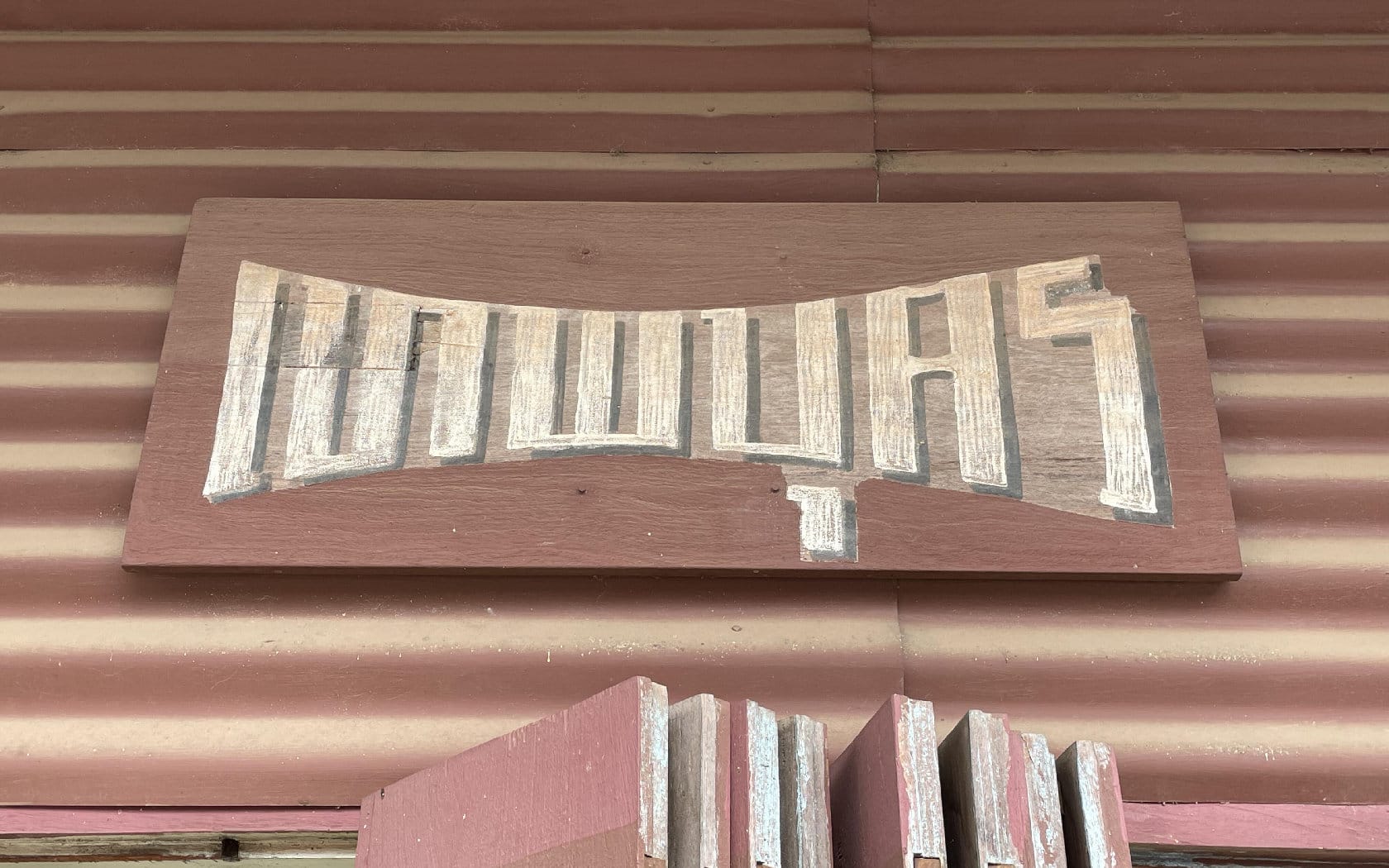
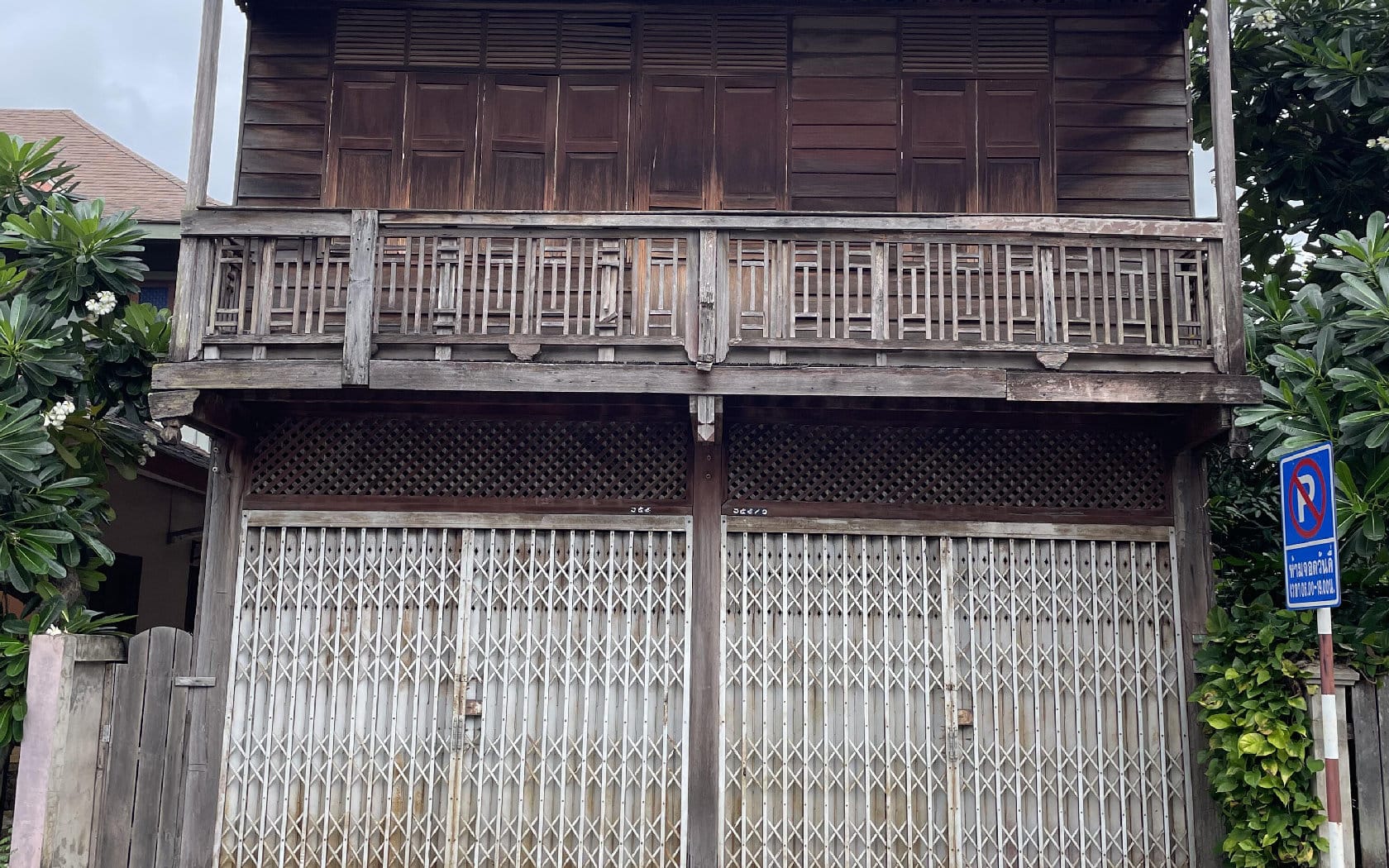
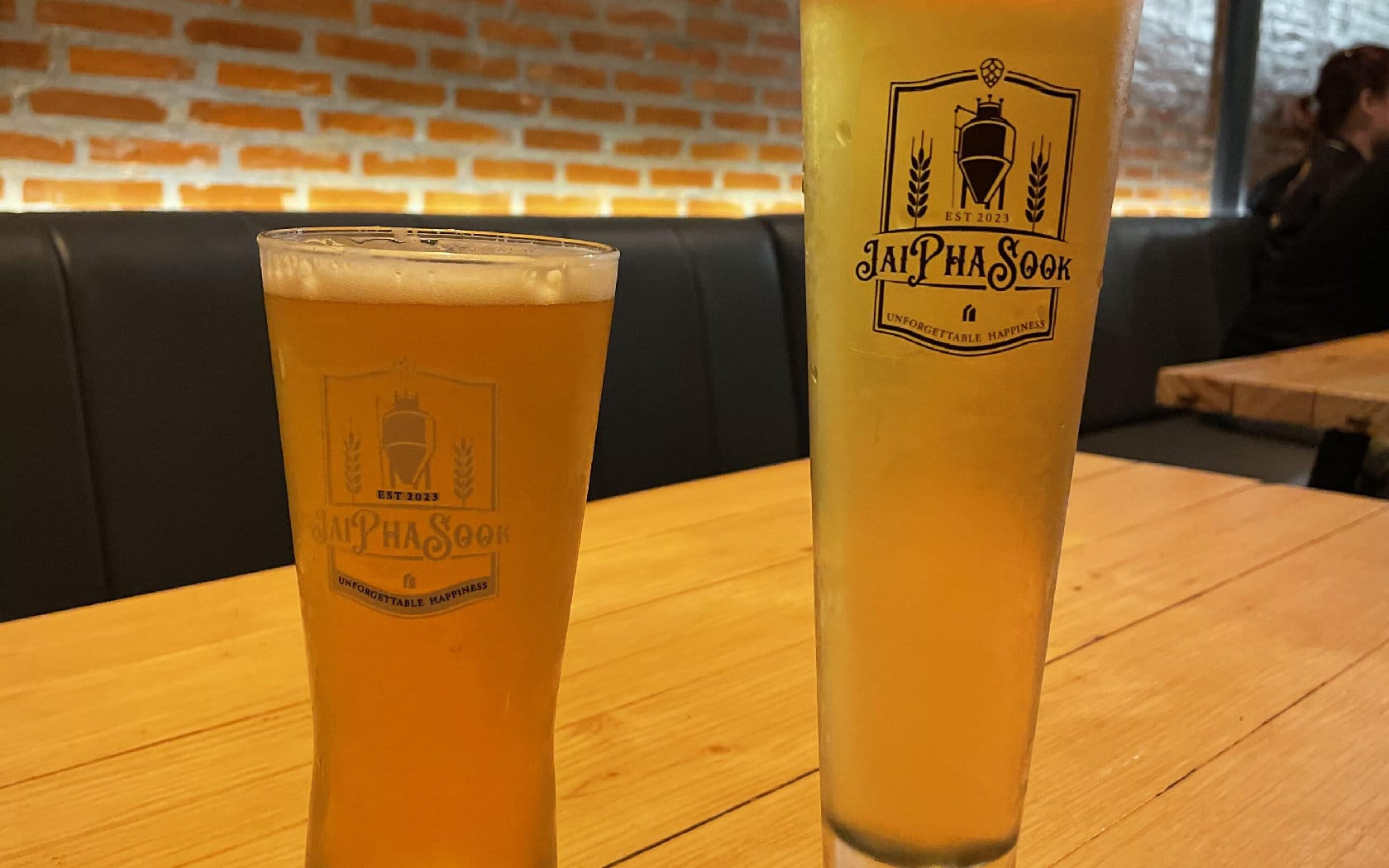
Jai Phasuk Road
Walking the Historic Streets of Old Sakon Nakhon
Old Sakon Nakhon is laced with historic streets—Charoen Mueang, Suk Kasem, and Jai Phasuk—each with deep roots in trade and community life. Once bustling hubs of commerce for Chinese and Vietnamese settlers, these streets still whisper stories of the past. A stroll here reveals charming wooden shophouses with shops on the ground floor and living quarters upstairs—an architectural style that’s becoming increasingly rare. Look closely, and you might spot the letters “ญอ” on some wooden doors, marking homes once occupied by Vietnamese migrants who fled war and religious persecution from the reign of King Rama V through the post–World War II era. These few surviving buildings are precious fragments of the city’s living history.
Don’t Miss: On Jai Phasuk Road, you’ll find Jai Phasuk Brewery—a proudly local craft brewery. Step inside, sip a cold pint, and leave with your heart every bit as happy as its name promises.
Opening Hours: 17:00–24:00
Tel: 081 232 4936
6
Piccolo Café
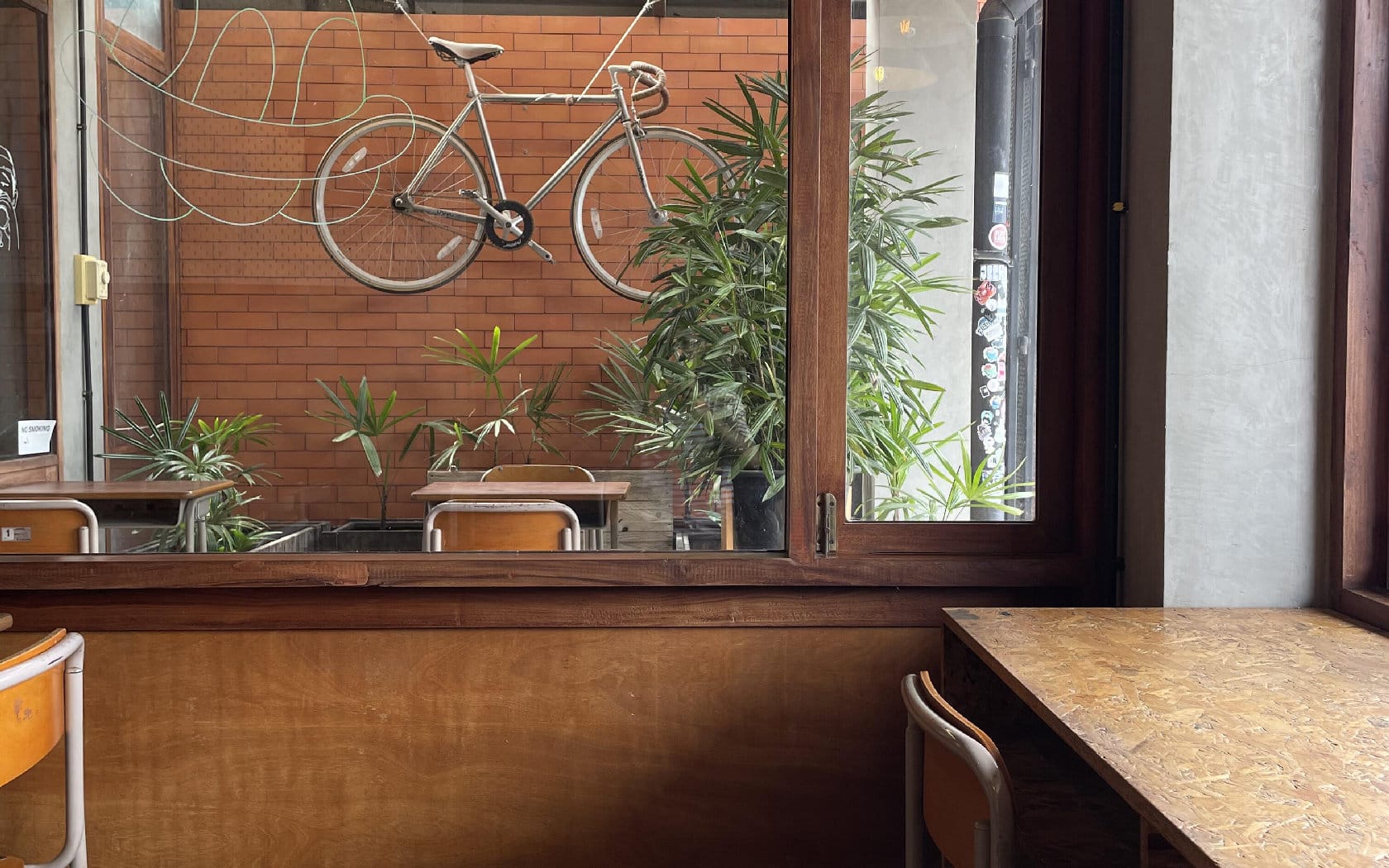
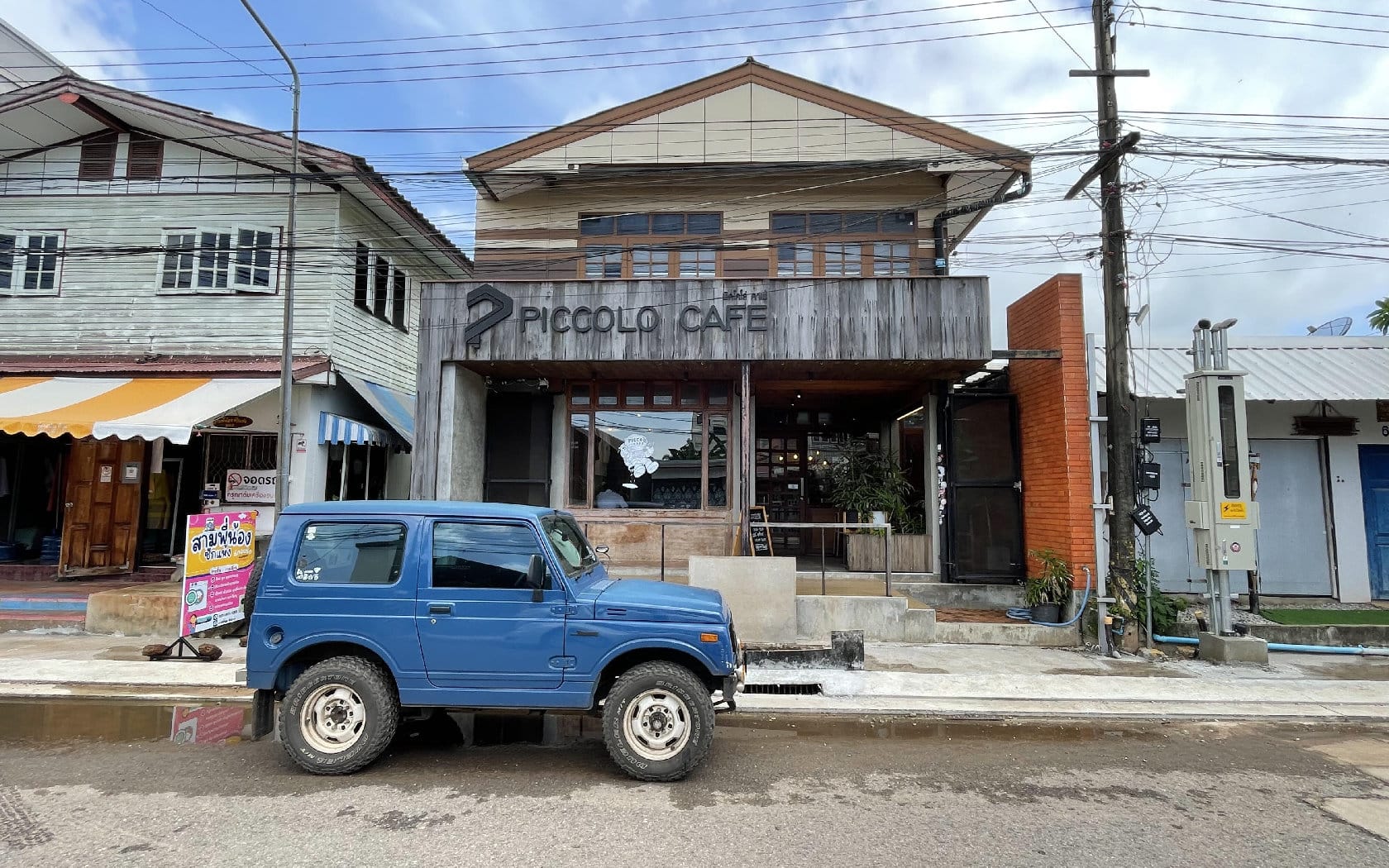
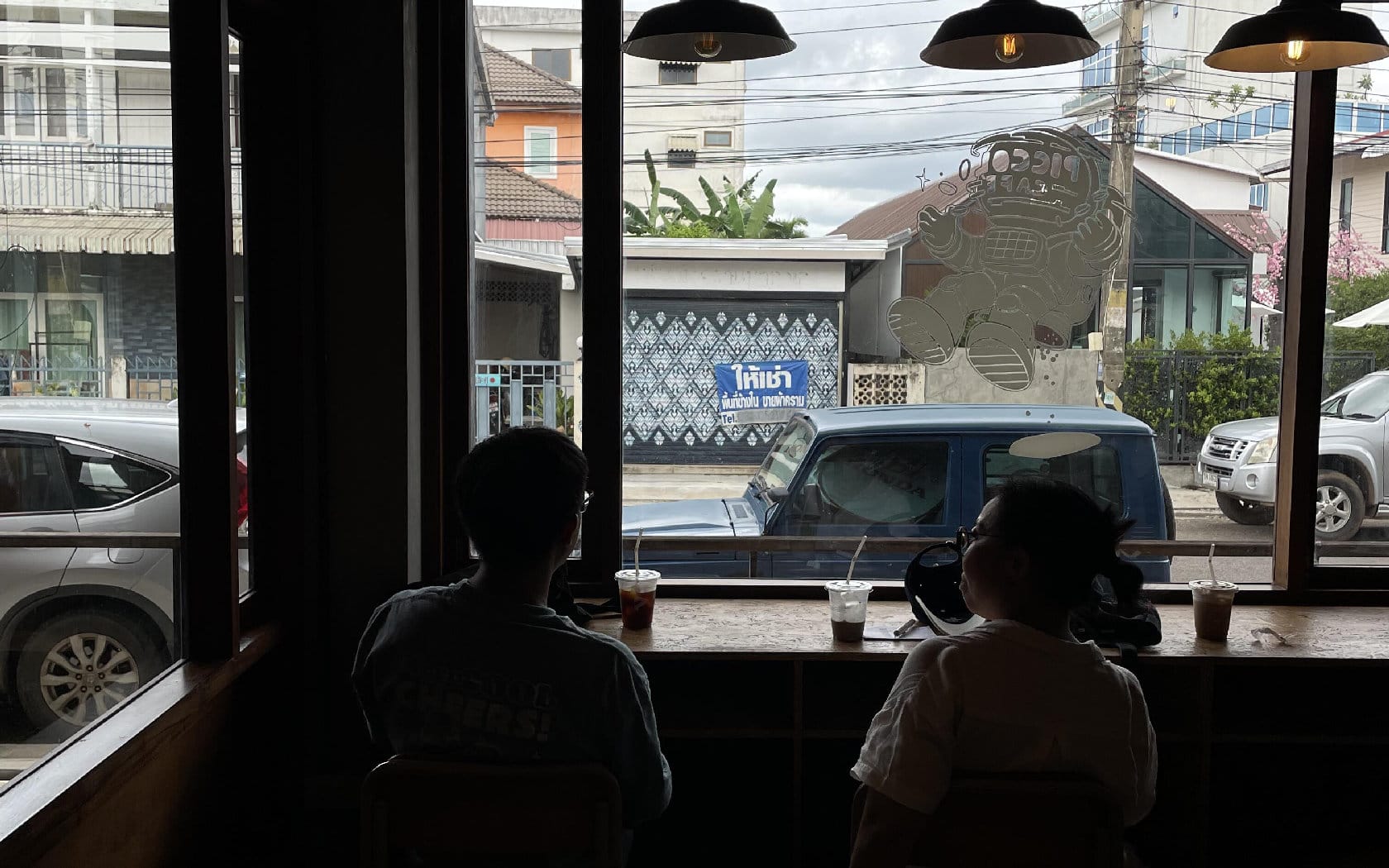
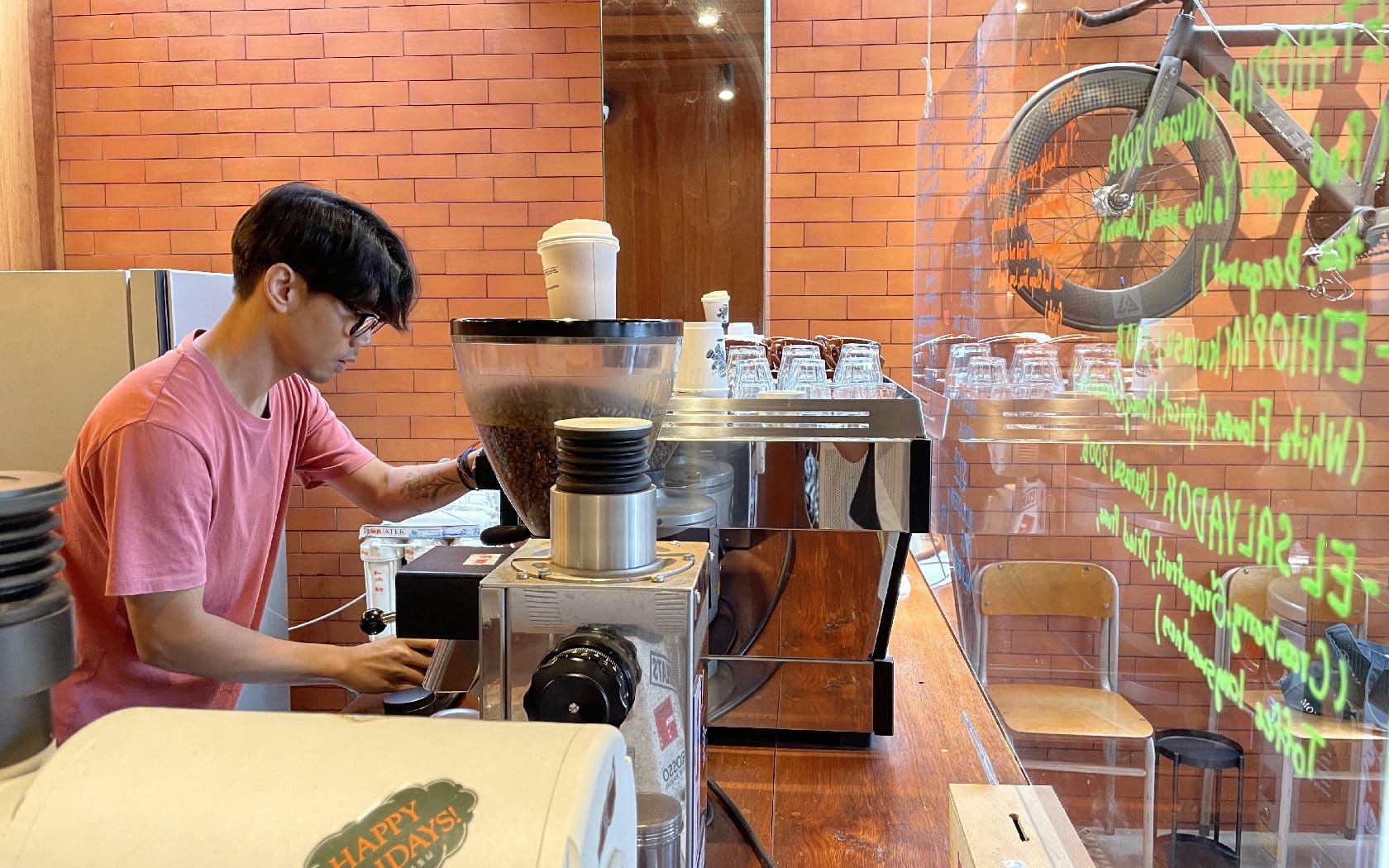
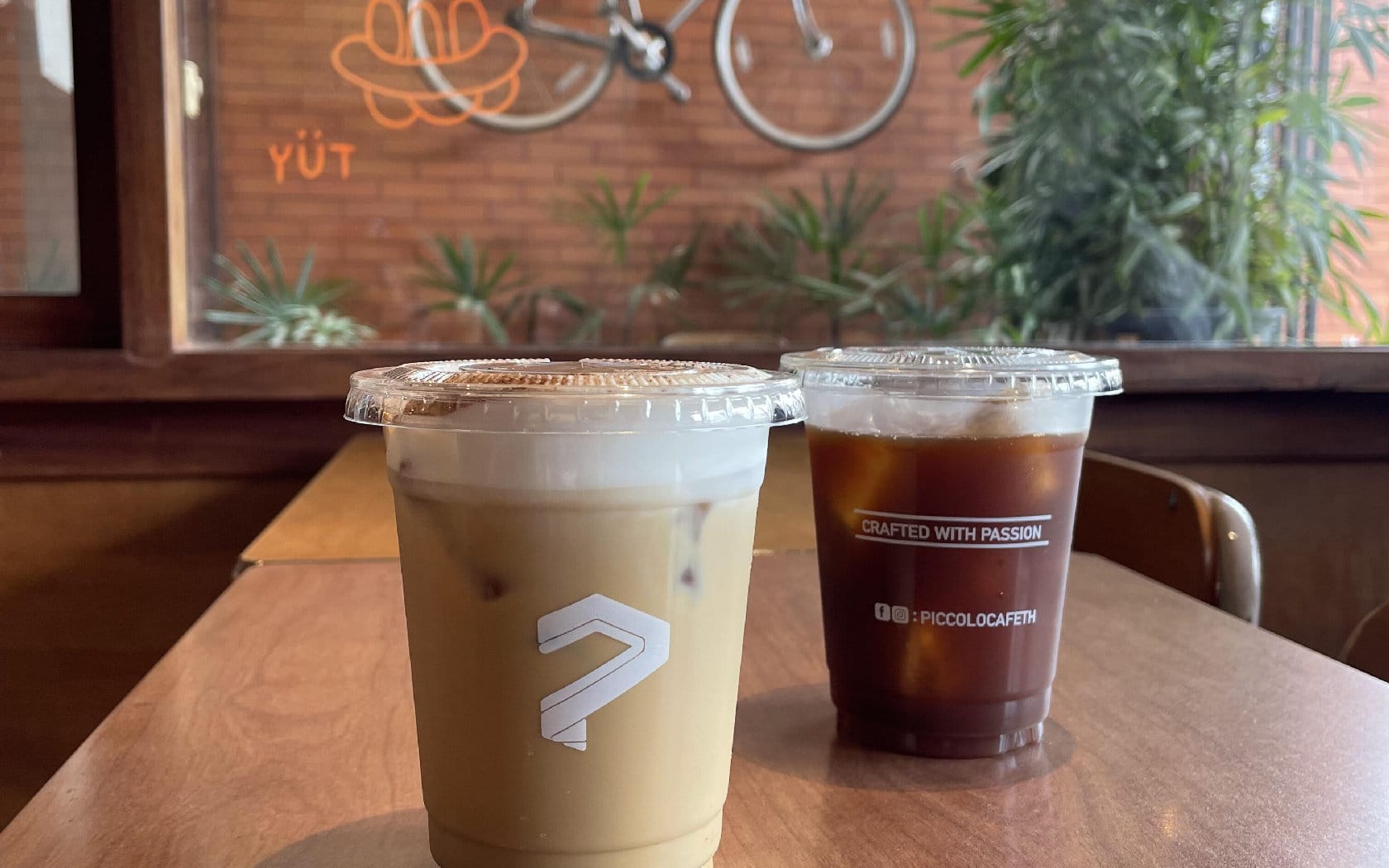
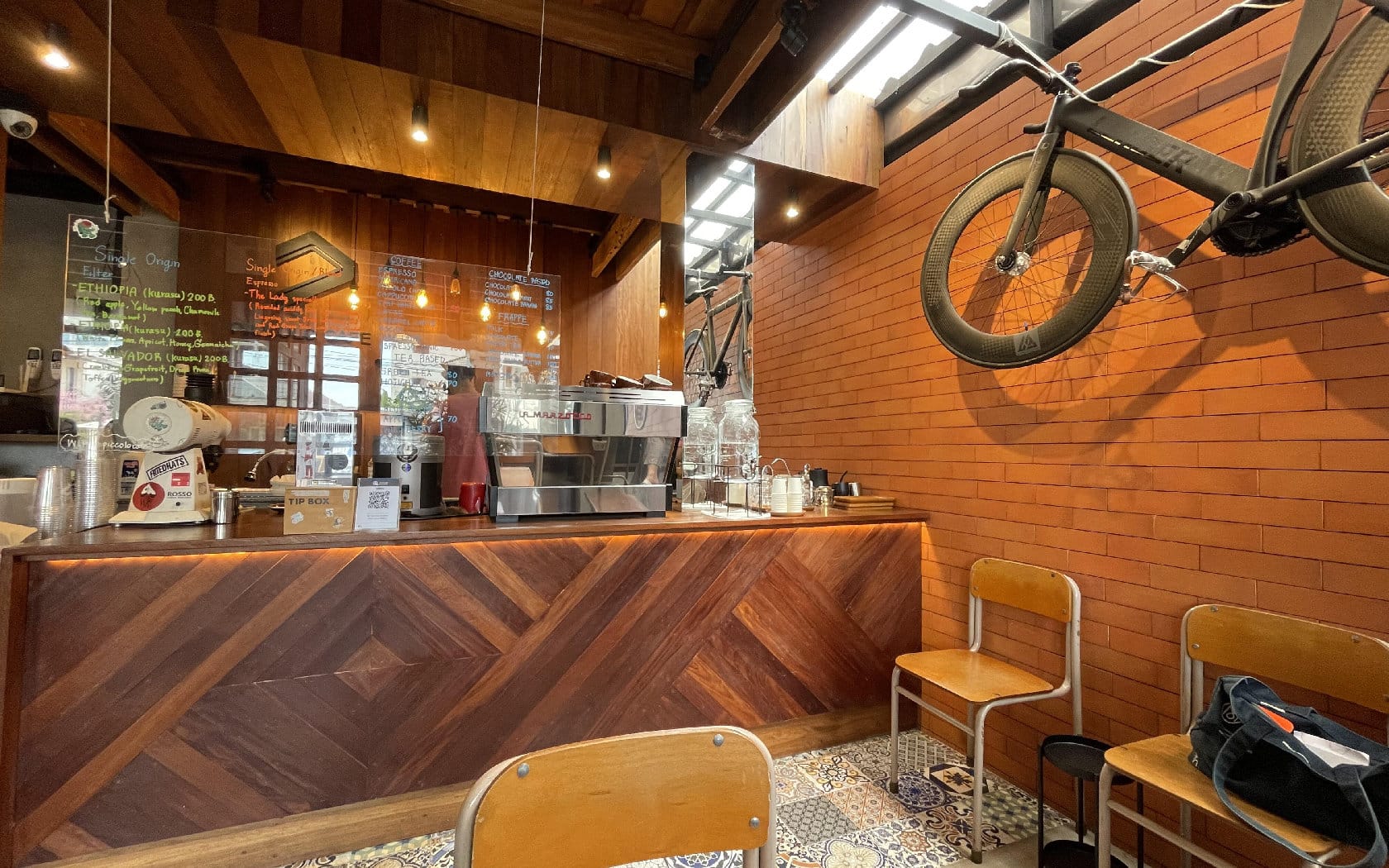
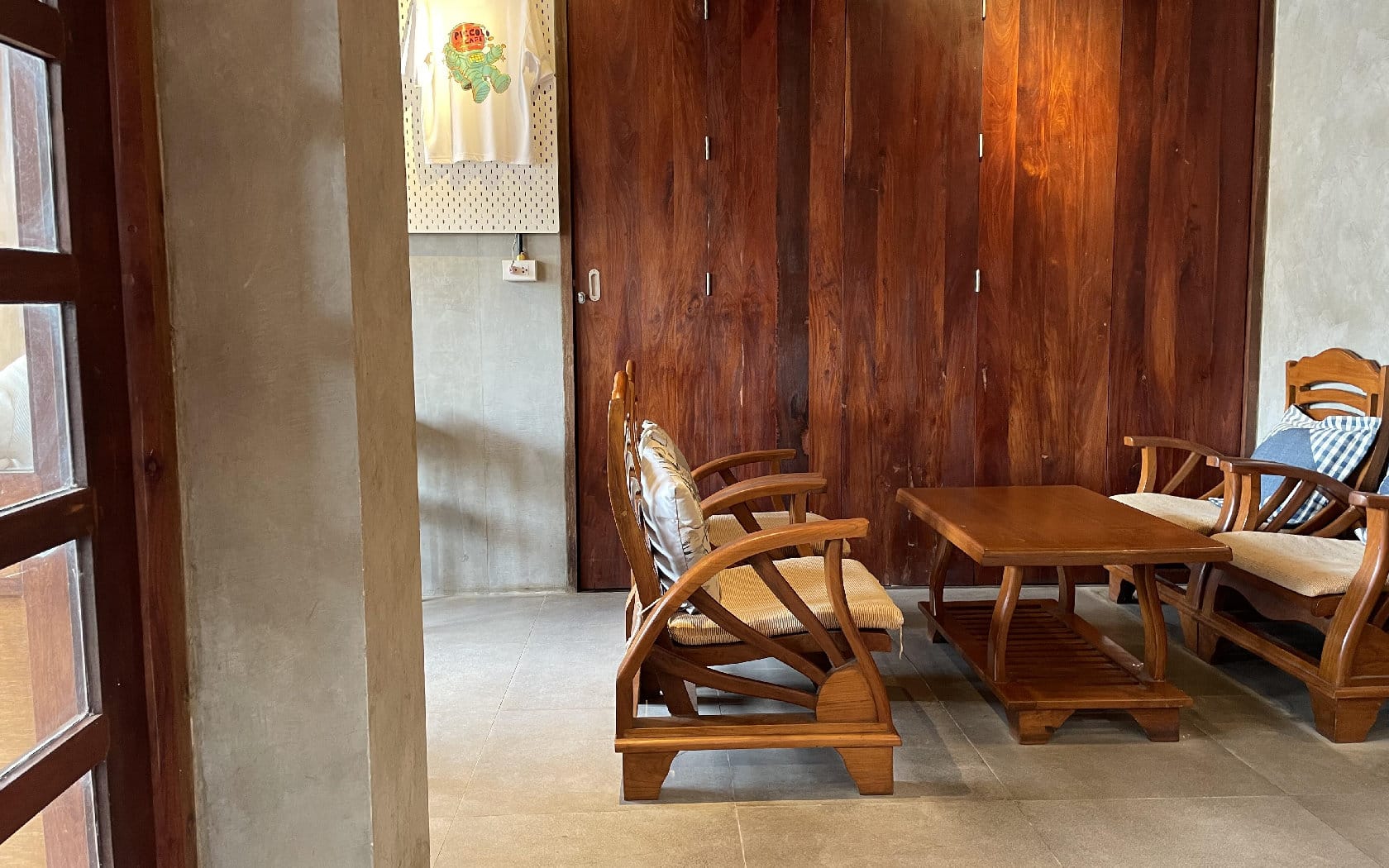
Piccolo Café
Despite its name appearing on the menu, owner Ohm insists the café’s signature drink isn’t actually a piccolo. Instead, the name “Piccolo” comes from the Italian word for “small”—a nod to this charming little coffee shop in a small town whose quality is anything but small. The house blend combines Thai and Kenyan beans, roasted medium-light to bring out the fullest expression of flavor in every sip. The space embraces warm earth tones, perfectly complementing the old wooden-and-brick house it calls home. If you visit on a weekend, you’re in for a bonus—right outside Piccolo on Ruang Sawat Road, the street transforms into the Indigo Fabric Street Market, where you can browse beautiful local indigo-dyed textiles, one of Sakon Nakhon’s most treasured crafts, to take home as a keepsake.
Opening Hours:
Mon–Fri (closed Wed): 08:00–15:00
Sat–Sun: 09:00–16:00
7
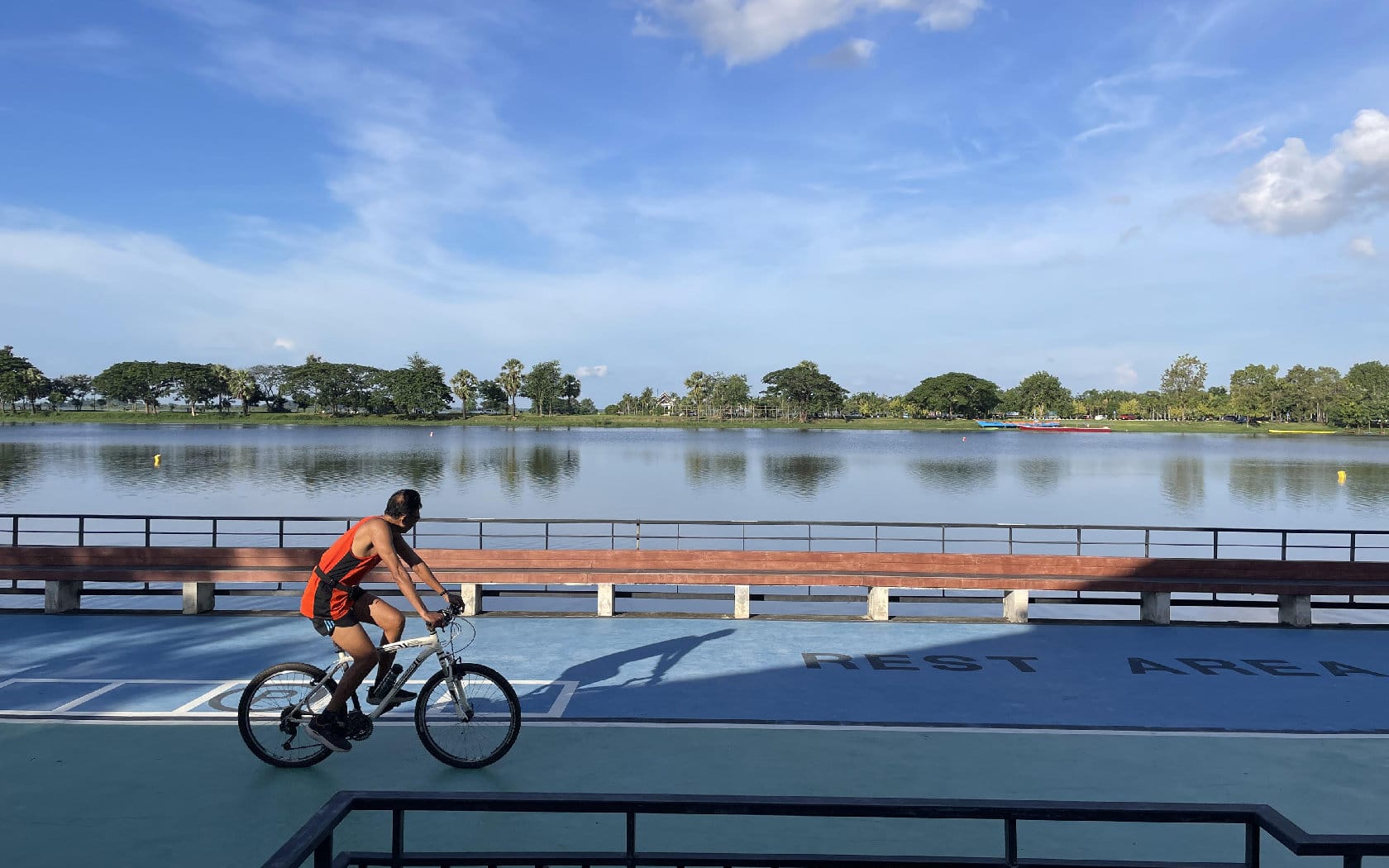
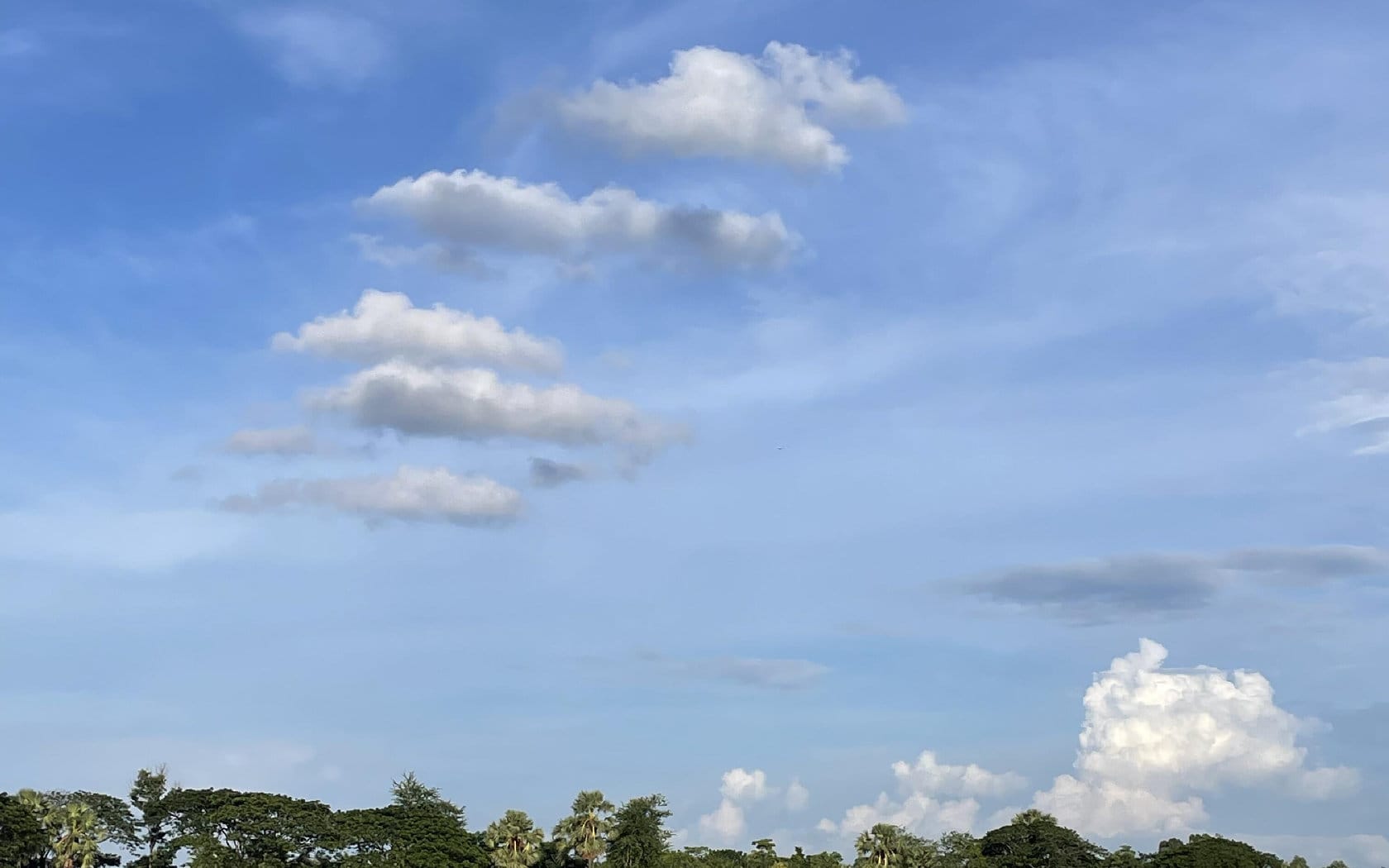
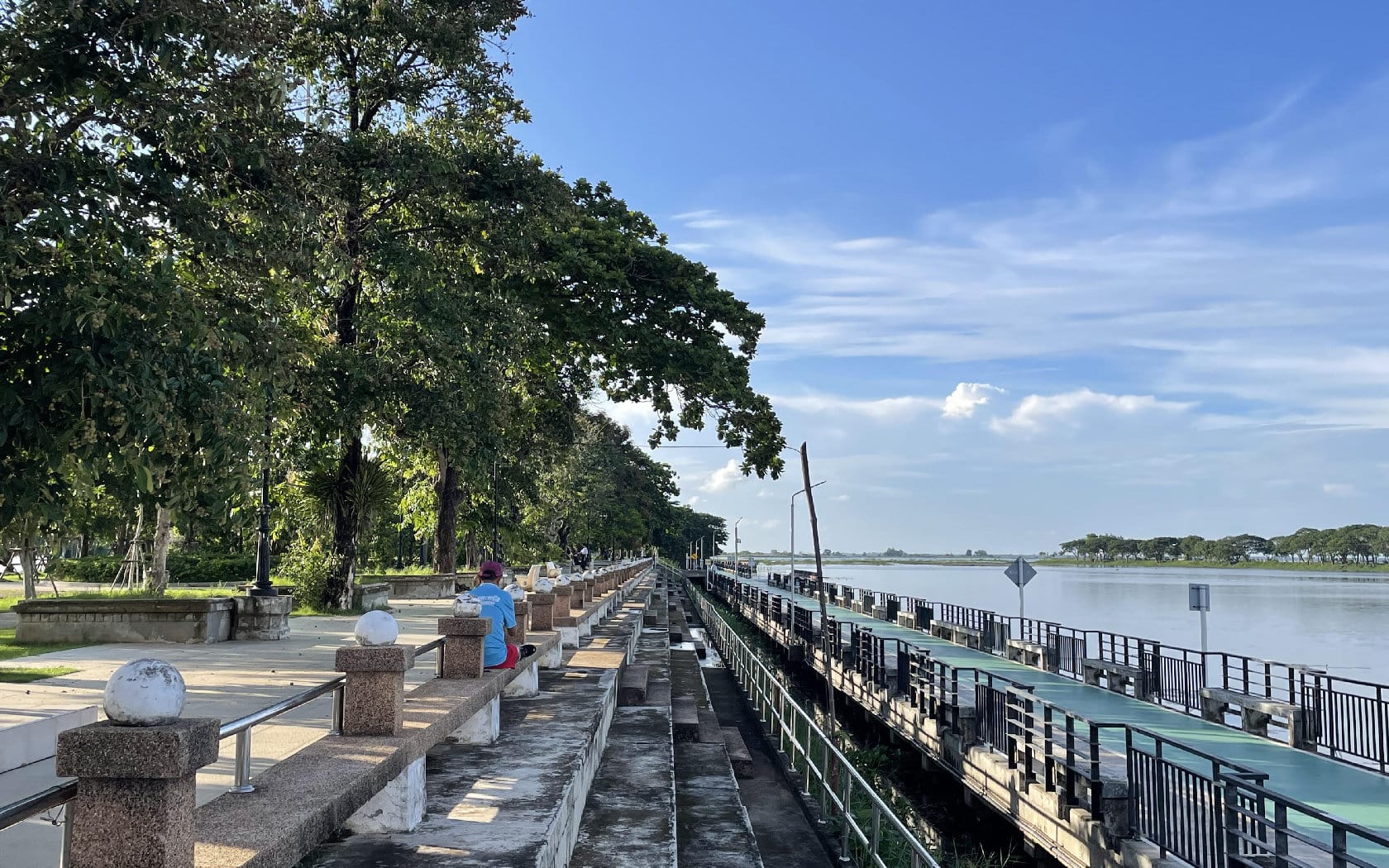
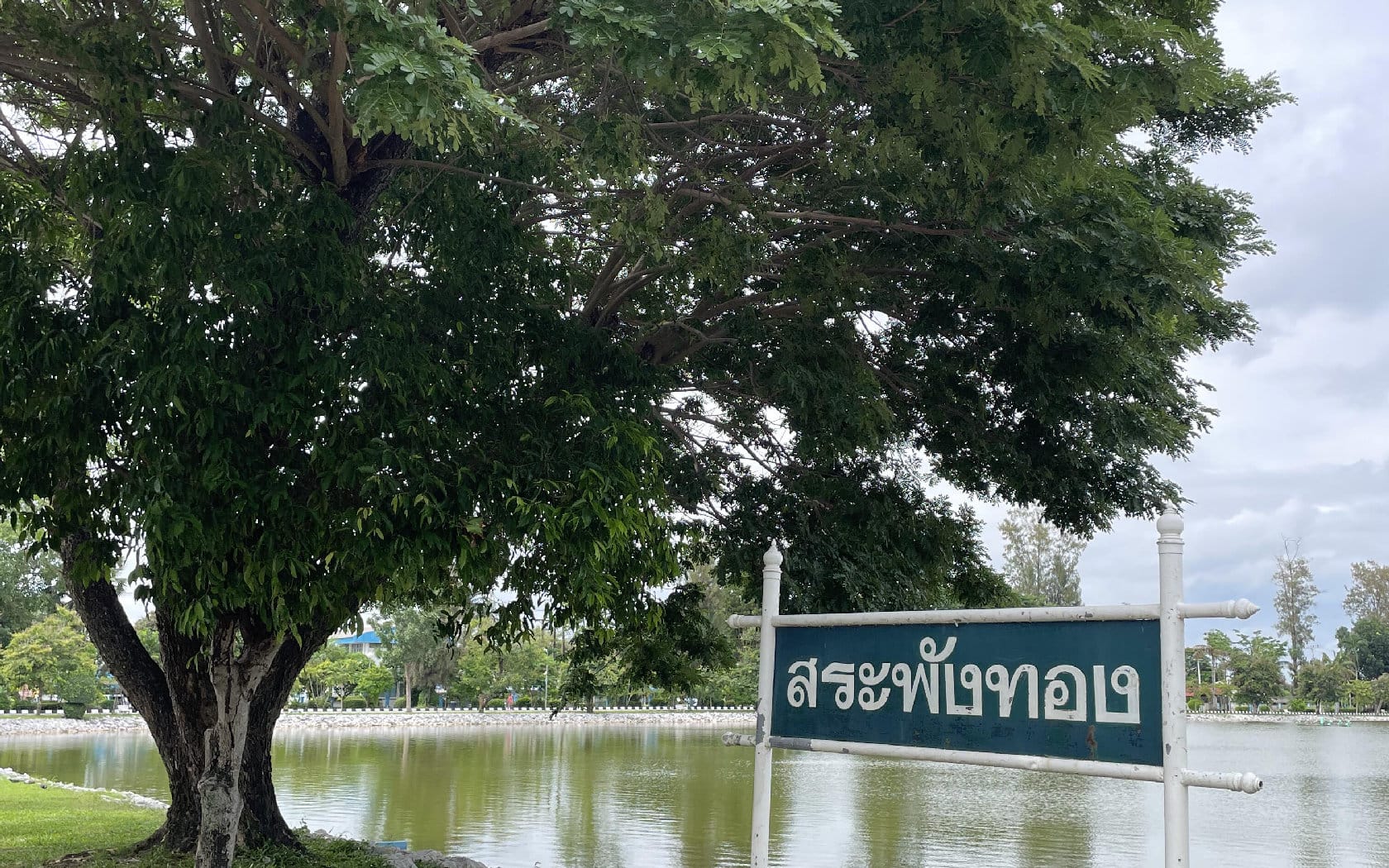
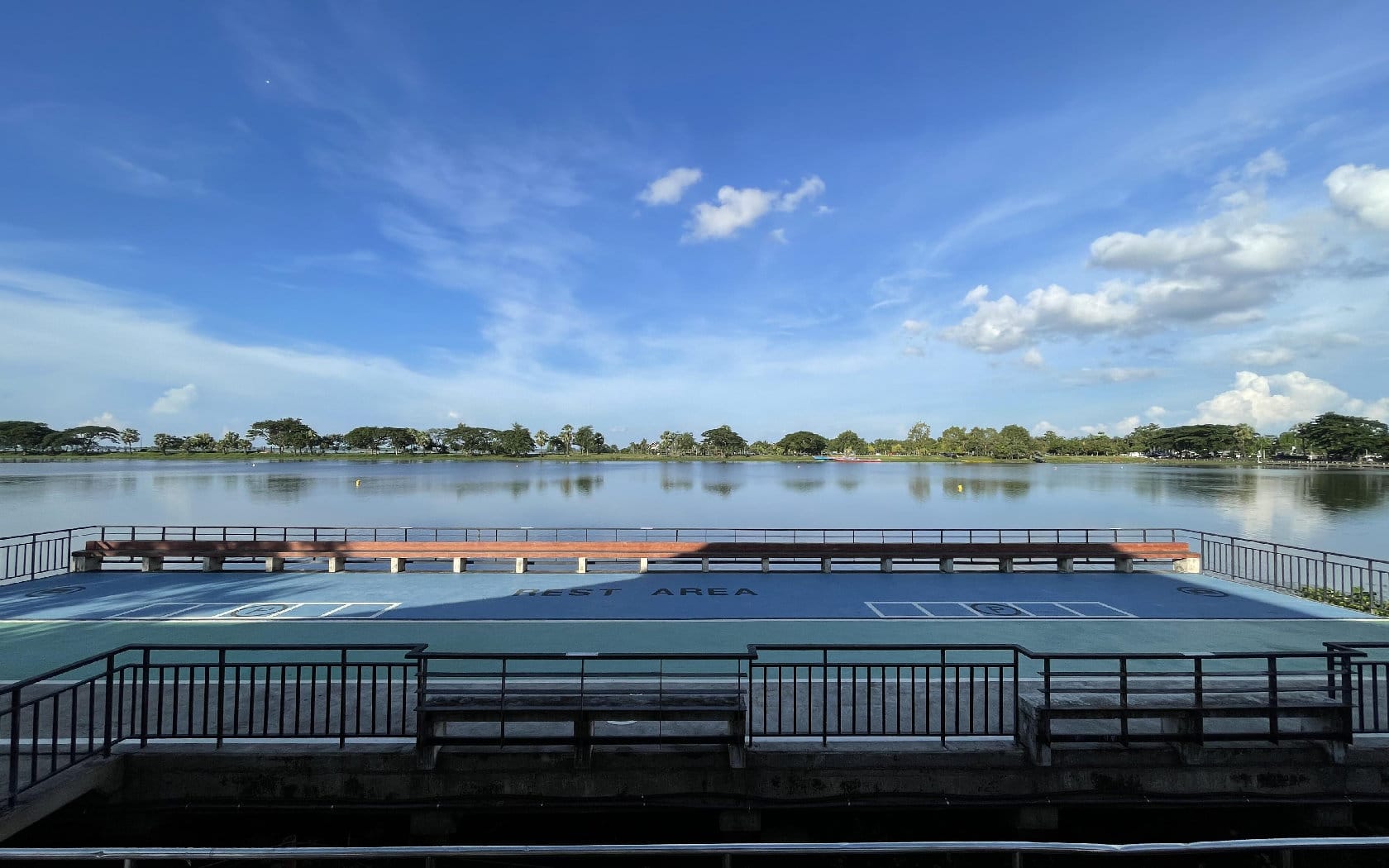
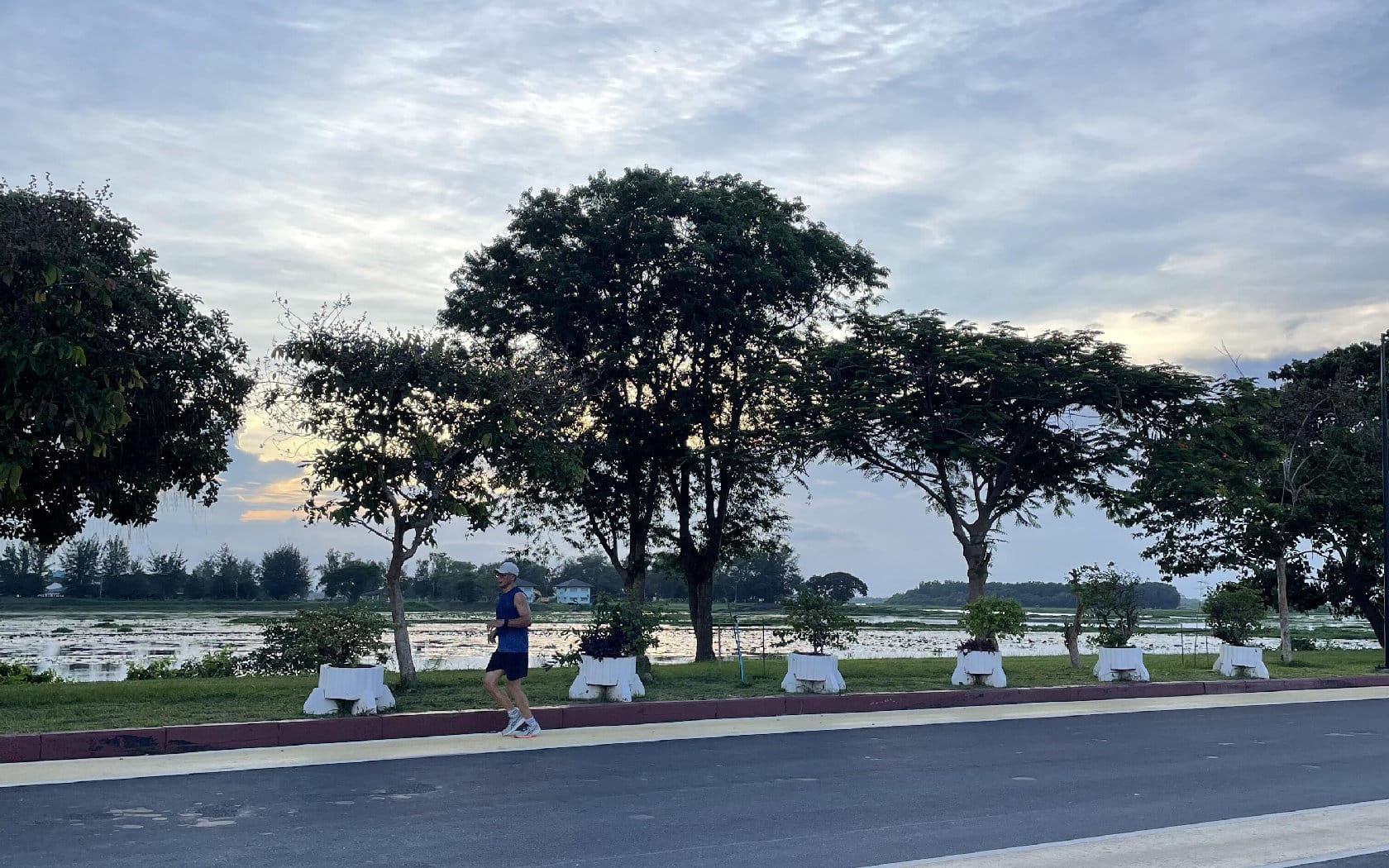
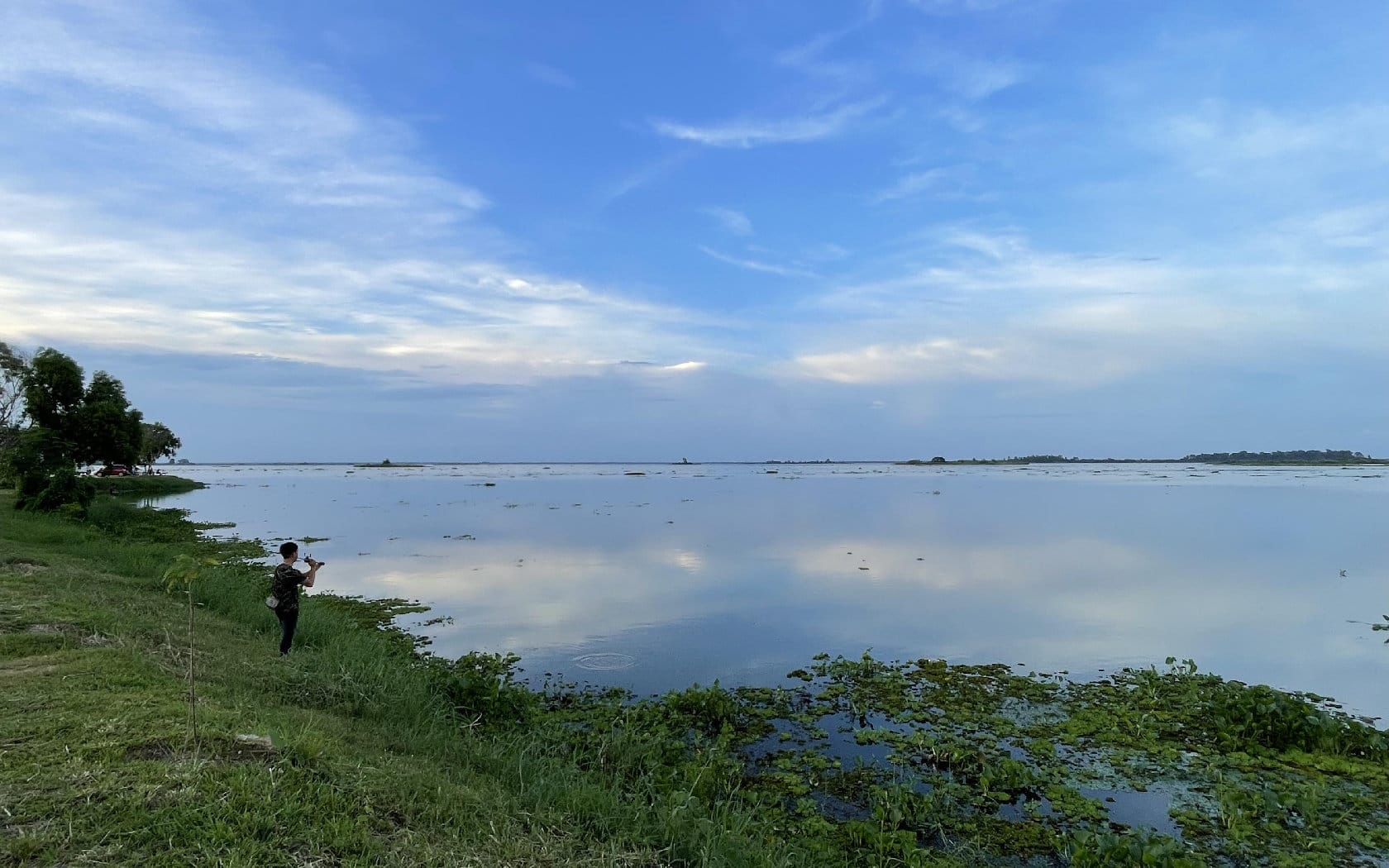
Srinakarin Garden
Encircling the historic Pang Thong Pond, this lush public park is more than just a green escape—it’s a living piece of Sakon Nakhon’s ancient heritage. Once a baray (reservoir) from the Khmer era, it has long been a vital water source for the community. Just a short stroll away, you can still see the ancient moat and earthen walls that once protected the old city along the shores of Nong Han Lake. Believed to date back to the same Khmer civilization, they were built both as city defenses and as a barrier against mountain waters from the Phu Phan Range. Today, both historic sites have been transformed by Sakon Nakhon Municipality into two beautiful public parks—Somdet Phra Srinagarindra Park and Somdet Chao Fa Kalyaniwatthana Park—fondly nicknamed by locals as the “Mother and Daughter” Parks. They’ve become favorite spots for walking, exercising, and soaking up the slow, peaceful rhythm of the city.
Opening Hours: Daily, 04:00–21:00
